
College Readiness of California’s
High School Students
The State Can Better Prepare Students for College by
Adopting New Strategies and Increasing Oversight
Report -
February
COMMITMENT
INTEGRITY
LEADERSHIP

For questions regarding the contents of this report, please contact MargaritaFernández, Chief of Public Affairs, at ..
This report is also available online at www.auditor.ca.gov | Alternate format reports available upon request | Permission is granted to reproduce reports
Capitol Mall, Suite | Sacramento | CA |
CALIFORNIA STATE AUDITOR
.. | TTY ..
...
For complaints of state employee misconduct,
contact us through the Whistleblower Hotline:
Don’t want to miss any of our reports? Subscribe to our email list at
auditor.ca.gov

Doug Cordiner Chief Deputy
Elaine M. Howle State Auditor
621 Capitol Mall, Suite 1200 Sacramento, CA 95814 916.445.0255 916.327.0019 fax www.auditor.ca.gov
February 28, 2017 2016-114
e Governor of California
President pro Tempore of the Senate
Speaker of the Assembly
State Capitol
Sacramento, California 95814
Dear Governor and Legislative Leaders:
As requested by the Joint Legislative Audit Committee, the California State Auditor presents this
audit report concerning access to and completion of college preparatory coursework needed for
admission to the State’s public university systems.
Our analysis suggests that students attending school districts that establish higher student expectations,
coupled with relevant tools and student support, are more likely to meet those expectations. SanFrancisco
Unified School District’s (San Francisco) college preparatory coursework completion rates (completion
rates) were significantly higher than the other twodistricts we reviewed—Stockton Unified School District
(Stockton), and Coachella Valley Unified School District (Coachella). Specifically, in2015 only 21percent
of Stockton’s students successfully completed the college preparatory coursework, while 30percentof
Coachella’s students met these requirements. In contrast, 69 percent of students in San Francisco
completed college preparatory coursework. We believe the difference in completion rates is in part because
SanFrancisco requires its students to take college preparatory courses in order to graduate and has devoted
significant resources to assisting its students in thisendeavor.
We also found that completion rates are influenced by whether students stay on a prescribed track
each year—most notably in grade nine. At each of the three districts, we found most students who
fell off track for completing the necessary coursework did so during gradenine and only 9percent of
them went on to complete the coursework necessary to gain admittance to the State’s public university
systems. us, students’ academic preparedness upon entering high school significantly impacts
completion rates. Funds to help kindergarten through grade eight students prepare for the rigor of
college preparatorycoursework could help keep more high school students on track to complete college
preparatory coursework requirements by their senioryear.
In addition, our review indicates that schools within our selected districts were able to provide students
with sufficient access to college preparatory coursework during the years that we reviewed, but we
encountered significant barriers to assessing the level of access because of the limited data the districts
maintained. e California Department of Education and county offices of education could provide
additional oversight, support, and guidance to districts to ensure they provide sufficient access to college
preparatory coursework and adequately assist their students in completing thosecourses.
Respectfully submitted,
ELAINE M. HOWLE, CPA
State Auditor
Blank page inserted for reproduction purposes only.

vCalifornia State Auditor Report 2016-114
February 2017
Contents
Summary 1
Introduction 5
Chapter 1
School Districts May Be Able to Significantly Improve Students’
CollegeReadiness by Offering a Range of Academic Supports 13
Recommendations 39
Chapter 2
Increased State and County‑Level Guidance and Oversight
CouldImproveStudents’ College Preparedness 41
Recommendations 51
Appendix A
Our Analysis of Student Access to College Preparatory Coursework 53
Appendix B
Student Demographics of Three Selected Districts 57
Responses to the Audit
California Department of Education 61
California State Auditor’s Comments on theResponse From
the California Department of Education 65
Coachella Valley Unified School District 67
California State Auditor’s Comment on theResponse From
the Coachella Valley Unified School District 69
Stockton Unified School District 71

vi California State Auditor Report 2016-114
February 2017
Blank page inserted for reproduction purposes only.

1California State Auditor Report 2016-114
February 2017
continued on next page . . .
Audit Highlights . . .
Our review of three school districts’
efforts related to college preparedness
highlighted the following:
» College preparatory coursework
completion rates were significantly
higher—69 percent—in one school
district compared to those in the other
two districts—21 and 30 percent.
» Completion rates at the three districts
we reviewed were heavily influenced by
students’ ability to complete coursework on
a prescribed track beginning in grade nine.
» The vast majority of students in two of
the three districts fell off track during
some point in their high school careers
and very few of those students went on to
complete college preparatory coursework.
» Although our analysis suggests that our
selected schools were able to provide
students with sufficient access to college
preparatory coursework during certain of
the years we reviewed, we encountered
significant barriers to assessing the level
of access for all years because of the
limited data the districts maintained.
» All three districts we reviewed showed
achievement gaps in completing college
preparatory coursework between certain
subgroups of students; however even
similar subgroups of students, such
as English learners, fared better in
one district compared to the other two.
» One district has devoted significant
resources to help its students, including
providing targeted intervention and
support for students who are not on track
to meet requirements.
Summary
Results in Brief
In recent years, California’s state and local educational agencies
have increasingly focused on the importance of preparing the
State’s students for college. e Public Policy Institute of California
projects that percent of California’s jobs will require at least a
bachelor’s degree by, while population and education trends
suggest that only percent of working-age adults in California
will have a bachelor’s degree at that time—a shortfall of .million
college graduates. To fill this gap, the State will need to significantly
increase the number of college-ready students who graduate from
its high schools each year. Onemeasure of college readiness is a
high school student’s completion of the college preparatory courses
necessary for admission to the University of California (UC) and
California State University (CSU). In – less than half of
high school students statewide completed the college preparatory
coursework that would qualify them to enroll in a UC or CSU
school upon high schoolgraduation.
Of the three districts whose efforts to improve college preparedness
we reviewed—SanFrancisco Unified School District (SanFrancisco),
Stockton Unified School District (Stockton), and Coachella Valley
Unified School District (Coachella), we found that SanFrancisco’s
college preparatory coursework completion rates (completion
rates) were significantly higher than those of the other twodistricts.
Specifically, in only percent of Stockton’s students and
percent of Coachella’s students successfully completed college
preparatory coursework. In contrast, percent of students
in SanFrancisco completed college preparatory coursework.
Although a number of factors contributed to the differences
in the threedistricts’ success in preparing students for college,
SanFrancisco’s prioritization of college preparatory coursework
completion appears to have a significant impact. In
SanFrancisco aligned its graduation coursework requirements with
the minimum coursework requirements necessary for admission to
UC andCSU.
Completion rates at the threedistricts we reviewed were also
heavily influenced by students’ abilities to complete coursework
on a prescribed track beginning in gradenine. Falling off this
track significantly decreases students’ chances of completing
college preparatory coursework. e vast majority of students in
graduation years through in Coachella and Stockton
fell off track at some point during their high school careers and
few of those students went on to complete all the necessary
college preparatory coursework by the end of high school.

California State Auditor Report 2016-114
February 2017
2
Specifically, percent and percent of Coachella and Stockton
students, respectively, fell off track and only percent of
Coachella and percent of Stockton students completed college
preparatorycoursework.
At each of the threedistricts, we found that of the students who fell
off track for completing the necessary coursework, up to percent
did so during gradenine, indicating that districts should ensure
that students enroll in and compete college preparatory coursework
beginning in their firstyear of high school. Furthermore, an average
of only percent of the students who fell off track in gradenine in the
threedistricts we reviewed graduated with the coursework necessary
to gain admission to the State’s public university systems. Moreover,
we found that on average, percent of Stockton students, percent
of Coachella students, and percent of SanFrancisco students did
not pass a college preparatory English class by the end of gradenine.
e percentage of gradenine students who were not prepared forthe
rigors of college preparatory coursework suggests that equipping
kindergarten through gradeeight students with the necessary skills
and knowledge is critical to ensuring that they will graduate from
high school having met the coursework requirements for admission
to the State’s public universitysystems.
Although our analysis suggests that the schools we selected were
able to provide students with sufficient access to college preparatory
coursework during certain of the years that we reviewed, we
encountered significant barriers to assessing students’ levels
of access for all years because of the limited data the districts
maintained. For example, Coachella’s business practices have been
to mark courses which ended prior to the final term of the school
year as inactive, which made it appear that Coachella failed to
offer courses even though it did actually offer them. Moreover, the
districts we reviewed do not conduct analyses that demonstrate that
they provided all students access to college preparatory coursework.
However, our analysis of available documentation indicates that
access did not significantly hamper students’ ability to complete
required college preparatorycourses.
In addition, all threedistricts we reviewed showed achievement
gaps in completing college preparatory coursework between
certain subgroups of students. Specifically, in SanFrancisco,
underrepresented minorities’ completion rates ranged from
percent to percent, whereas white and Asian students’
completion rates ranged from percent to percent.
Similarly,Stockton’s completion rates for underrepresented
minorities ranged from percent to percent, whereas
completion rates for white and Asian students ranged from
» Even though required by state law, the
California Department of Education
provides only minimal assistance to
districts to ensure students have access
to college preparatory coursework.
» County offices of education could provide
additional oversight, support, and
guidance to districts to ensure they provide
sufficient access to college preparatory
coursework and adequately assist their
students in completing those courses.

3California State Auditor Report 2016-114
February 2017
percent to percent.
1
However, other subgroups of students—
such as students who are eligible to receive free or reduced price
meals at school, English learners, and youth in foster care—
generally fared better in SanFrancisco than Coachella and Stockton.
In particular, SanFrancisco’s completion rate for these students is
threetimes that of similar students in Stockton and twotimes that
of students inCoachella.
Our analysis suggests that students attending school districts that
establish higher student expectations, coupled with relevant tools
and student support, are more likely to meet those expectations.
Although all threedistricts we reviewed have adopted best
practices to support their students during their high school
careers, SanFrancisco in particular employs a variety of tools
that have likely contributed to its high completion rates. In
addition to aligning its graduation coursework requirements with
coursework requirements necessary for admission to UC and
CSU, SanFrancisco devoted significant resources and support
to help its students succeed. is support includes robust credit
recovery options, including options to repeat failed classes
through summer school and after school, for students who do not
meet requirements. SanFrancisco also implemented systematic,
districtwide identification of students who are at risk of not meeting
coursework requirements and then intervenes by meeting with
those students and notifying their parents. Although Stockton and
Coachella offered their own best practices, opportunities remain
for improvement, particularly with regard to identifying and
providing support for students who are struggling to meet college
preparatoryrequirements.
Further, the California Department of Education (Education) and
county offices of education could provide additional oversight,
support, and guidance to districts to ensure they provide sufficient
access to college preparatory coursework and adequately assist
their students in completing those courses. Although each of
the threedistricts we visited stressed the importance of college
preparatory coursework completion, no clear statewide framework
exists for ensuring that districts meet that goal. State law requires the
superintendent of public instruction, who heads Education, to assist
districts to ensure that all public high school students have access
to a core curriculum that meets the admission requirements of UC
and CSU. However, Education currently provides only minimal
assistance to districts: over the last fouryears, the only guidance it
has offered was oneletter.
1
We used the University of California’s (UC) definition for underrepresented minorities. Specifically,
the UC considers underrepresented minorities to be Chicanos/Latinos, African Americans, and
AmericanIndians.

California State Auditor Report 2016-114
February 2017
4
Selected Recommendations
If the Legislature wishes to further prioritize students’ completion
of college preparatory coursework, it should ensure gradenine
students are ready for the rigors of such work by devoting
additional resources or reallocating existing resources for
educational efforts beginning in kindergarten and continuing
through grade eight.
To increase students’ completion rates, districts should take the
followingactions:
• Develop and institute a model similar to SanFrancisco’s
system that will allow them to determine whether students are
completing grade-level college preparatory coursework and to
intervene asnecessary.
• Create a robust and stable network of credit recovery options
that reflect the needs of their student populations. ese
options—which the districts should monitor for effectiveness—
should include summer school courses and eveningcourses.
To comply with existing law and ensure that students receive
sufficient access to college preparatory coursework, Education
should provide additional training and guidance to districts
throughout the State on the creation and application of appropriate
district and school level accessanalyses.
Agency Comments
Education did not agree with our recommendation, but stated it would
continue to provide assistance to districts as required by statelaw.
Stockton stated it is working to improve services to students in
all areas, including access to and successful completion of college
preparatory courses. Coachella stated that it will continue to build
personnel capacity and programs to help foster improvements
in both student achievement and system processes in support of
students. San Francisco did not provide a response to theaudit.

5California State Auditor Report 2016-114
February 2017
Introduction
Background
ere were high school districts and unified school districts—
that include students from kindergarten to grade —in California
with nearly .millionenrolled high school students in the –
school year. To ensure that all of these students have the skills and
knowledge necessary to succeed, districts have been increasing
the emphasis they place on college readiness. According to Higher
Education in California, a report published by the Public Policy
Institute of California (PPIC), the State’s higher education system is
not keeping up with the changing economy. e PPIC projects that
if current trends persist, percent of jobs in will require at
least a bachelor’s degree. However, population and education trends
suggest that only percent of working-age adults in California will
have bachelor’s degrees by—a shortfall of .million college
graduates. e PPIC suggests that the State needs to act now to
close this skills gap and meet futuredemand.
College Preparatory Coursework Requirements
Since the University of California (UC) has required
highschoolsto submit for approval a list of college
preparatory courses that fulfill the requirements for
admission to UC. In the Legislature required of the
California State University (CSU), and requested of UC,
to establish a model set of uniform academic standards
for high school courses for admission to CSU and UC.
As Figure on the following page shows, these academic
standards encompass the high school coursework UC
and CSU require for admission. ese courses are called
the a‑g courses because of the letters assigned to each
subject area: a is for history, b is for English, and so on.
Only courses certified through the UC’s course approval
process are valid for admission purposes to both the UC
and CSU systems. e intent of college preparatory
coursework is to ensure that students attain a body of
general knowledge that will provide breadth and
perspective to new, more advancedstudy.
To qualify as an a-g course, a high school course
must be certified through the UC’s course approval
process, as we further describe in the textbox.
According toUC’s associate director of undergraduate
admissions, UC approves these courses based on the
courses meeting specific criteria. UC maintains lists
Additional Information About the
UC Course Approval Process
• All college preparatory courses must be certified by UC
for students to receive college preparatory credit. Courses
that are approved by UC meet both the UC and the CSU’s
admission requirements. UC is the only state entity that
certifies college preparatory courses. CSU adopted the
same basic college preparatory curriculum and relies on
UC to approve thecourses.
• To certify a course, California high schools and online
schools submit college preparatory courses in the
sevensubject areas to UC forapproval.
• UC evaluates course submissions based on criteria
developed by UC’sfaculty.
• UC maintains lists of college preparatory courses for each
school and instructs schools to update the lists regularly.
The course lists for each school should include all courses
available to students for the upcoming academicyear.
Source: California State Auditor’s review of information from
UCand theCSU.

6 California State Auditor Report 2016-114
February 2017
of each school’s college preparatory courses and instructs schools
to update lists annually. Although other states’ university systems
have general coursework requirements, only California, Georgia,
Nevada, and Kansas have statewide processes in place to centrally
approve those courses required for collegeadmission.
Figure 1
Minimum College Preparatory Coursework Necessary for Admission to California’s PublicUniversities
SUBJECT REQUIREMENTCATEGORY
HISTORY
ENGLISH
MATHEMATICS
LABORATORY SCIENCE
FOREIGN LANGUAGE
VISUAL AND PERFORMING ARTS
COLLEGE PREPARATORY ELECTIVES
g
f
e
d
c
b
a
2
YEARS
4
YEARS
3
YEARS
2
YEARS
2
YEARS
1
YEAR
1
YEAR
Source: The University of California (UC).
Notes: Students must complete each course with a grade of C- or better to be admitted to California’s public universities.
UC refers to Foreign Language as languages other than English.
State law requires districts to provide all qualified students with
timely opportunities to enroll in each college preparatory course
necessary to fulfill the requirements for admission to the State’s
public universities. Although state law sets certain minimum
graduation requirements for high school students throughout
the State, districts can adopt other coursework requirements.
For example, districts may require varying levels of math or
foreign language requirements for students to be eligible to
graduate. Similarly, school districts have the option of requiring all
students to complete college preparatory coursework to graduate.

7California State Auditor Report 2016-114
February 2017
SanFrancisco, SanDiego, and LosAngeles Unified School Districts,
among others, require students to complete a full sequence of
college preparatory courses before they cangraduate.
Educational Funding and Oversight
California’s education system involves both statewide and local
entities. e State Board of Education (State Board) is the State’s
kindergarten through grade policy-making body; it also adopts
academic standards, assessments, and templates for local control
and accountability plans. e California Department of Education
(Education), on the other hand, is responsible for implementing the
policies created by the State Board and overseeing school districts.
Education also receives data from schools about graduation rates,
enrollments, and other statistics through a program known as
the California Longitudinal Pupil Achievement Data System.
In addition, the county offices of education (county offices)
are responsible for examining and approving school district
budgets. County offices may also provide or help formulate
new curricula and instructional materials and training and data
processingservices.
e adoption of the Local Control Funding Formula (funding formula)
in revised the funding allocation for districts. In addition,
under this funding formula, districts receive specific funds to help
unduplicated students. State law describes an unduplicated student as
a pupil who is either classified as an English learner, eligible for free or
reduced price meals, or is a fosteryouth.
Further, the Legislature approved additional funding for districts
in when it created the College Readiness Block Grant
(Block Grant). e Block Grant allocated million to
provide additional support to high school students, particularly
unduplicated students, to increase the number who enroll in
institutions of higher education and complete bachelor’s degrees
within fouryears. Education distributed the funds to districts based
on the number of unduplicated high school students they enrolled
in –. Districts can use the funds for support activities such
as professional development for teachers, administrators, and
counselors; counseling programs; and programs to expand access to
coursework to satisfy the college preparatory courserequirements.
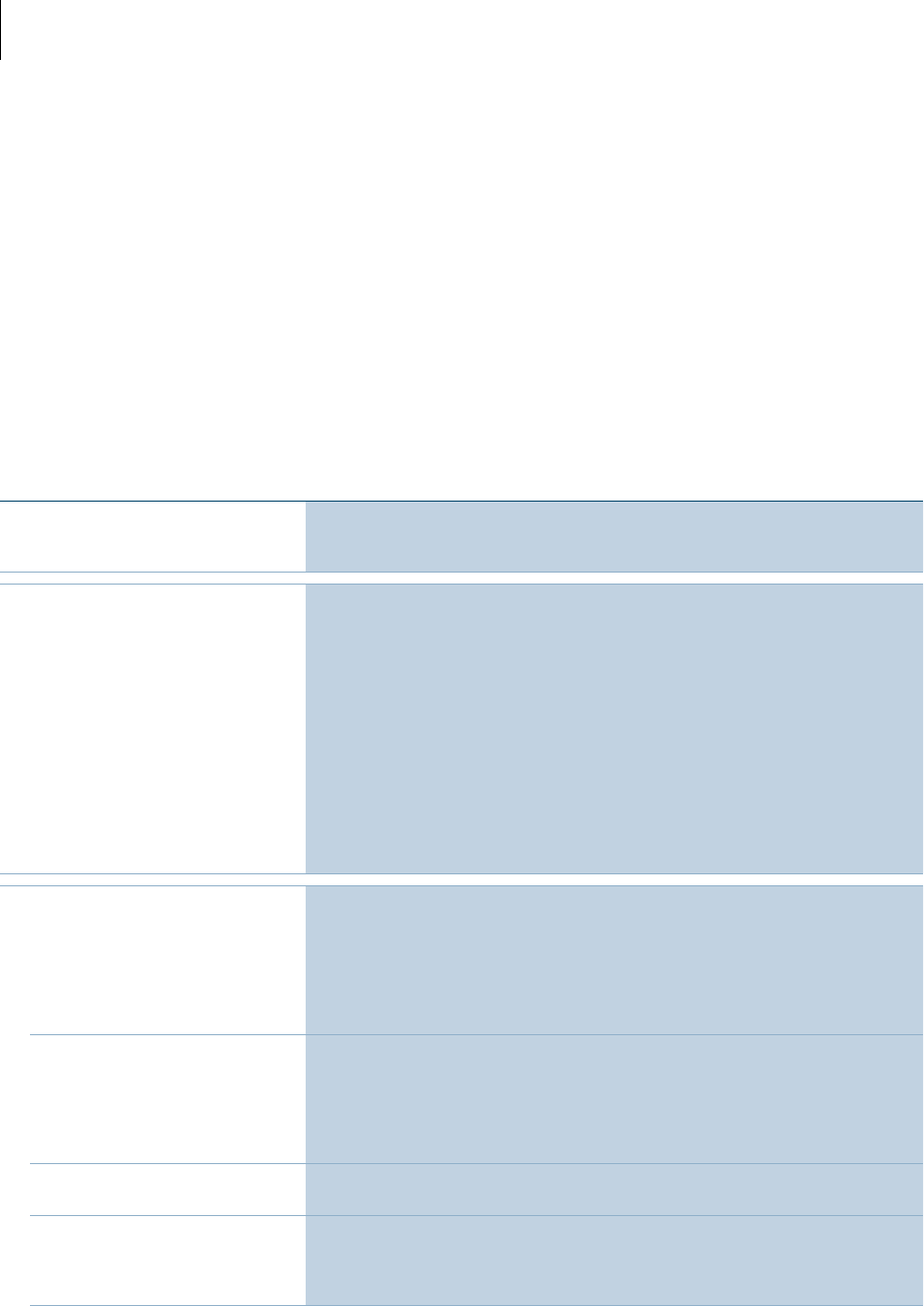
8 California State Auditor Report 2016-114
February 2017
Scope and Methodology
e Joint Legislative Audit Committee (Audit Committee) directedthe
California State Auditor to conduct an audit of college preparatory
coursework at a selection of high schools from threeschool districts.
We list the objectives that the Audit Committee approved and the
methods we used to address those objectives in Table.
Table 1
Audit Objectives and the Methods Used to Address Them
AUDIT OBJECTIVE METHOD
1 Review and evaluate the laws, rules,
and regulations significant to the
auditobjectives.
Reviewed relevant laws, regulations, and other relevant background materials applicable to access
to and completion of a–gcourses.
2 Determine the percentage of a–gcourses
offered by each district and selected high
school. To the extent possible, determine
how many students at the high schools
are eligible to enroll in these classes
and whether the number of available
courses is sufficient to offer courses to all
eligiblestudents.
• Selected Coachella Valley, SanFrancisco, and Stockton Unified School Districts and sixhigh
schools within those districts from among the 13potential districts noted in the audit request
based on a variety of factors, including a–g completion rate, unduplicated pupil percentage,
and geographiclocation.
• Obtained and analyzed student-level data from our selected districts and high schools for
graduation years2013 through2015 for all enrolled students to determine whether sufficient
access to college preparatory courseworkexisted.
• Reviewed master schedules at each of the sixhighschools.
• Obtained and analyzed certain enrollment and completion data from the California Department
of Education (Education), including the percentage of a–g courses offered and statewide
completionrates.
• All of the districts we interviewed confirmed that there are no eligibility requirements for college
preparatorycoursework.
3 At each district and the selected high
schools, determine the following
information, to the extent possible, and
whether barriers exist that prevent specific
populations of students from enrolling
in or completing a–g coursework at rates
comparable to those of theirpeers:
• Obtained and analyzed student-level enrollment and completion data from our selected districts
and high schools for graduation years2013 through2015.
• Interviewed district and high school personnel related to college preparatory coursework barriers
that students mayface.
a. The total number of students enrolled,
categorized by race, ethnicity,
gender, unduplicated pupil status
(as defined by California Education
Code section42238.02), and English
learnerstatus.
Obtained and analyzed student-level enrollment and completion data from our selected districts and
high schools for graduation years2013 through2015.
b. The percentage of students, by grade,
enrolled in a–g courses.
Obtained and analyzed student-level enrollment and completion data from our selected districts and
high schools for graduation years2013 through2015.
c. Enrollment rates for a–g courses by
course, grade, race, ethnicity, gender,
unduplicated pupil status, and English
learnerstatus.
Obtained and analyzed student-level enrollment and completion data from our selected districts and
high schools for graduation years2013 through2015.

9California State Auditor Report 2016-114
February 2017
AUDIT OBJECTIVE METHOD
d. The percentage of students on track to
complete a–g coursework bygrade.
• Obtained and analyzed student-level enrollment and completion data from our selected
districtsand high schools for graduation years2013 through2015.
• Defined an on track model based on University of California (UC) and California State University(CSU)
credit and course requirements and interviews with district personnel. This model does
not accountfor all of the means by which students can bypass the general a–g coursework
requirements. For example, the UC and CSU allow students to take and pass an Advanced
Placement exam instead of completing a related a–g course. Moreover, there are certain
validation rules for circumstances in which students are presumed to have completed the
lower-level coursework if they have successfully completed advanced work in an area of sequential
knowledge.Our model includes the foreign language validation rule. Finally, our model considers
students to have met the requirements if they received a C- or better in eachcourse.
e. The a–g course completion rate by
course, grade, race, ethnicity, gender,
unduplicated pupil status, and English
learnerstatus.
• Obtained and analyzed student-level enrollment and completion data from our selected
districts and high schools for graduation year2013 through2015.
• Interviewed district and high school personnel related to college preparatory
courseworkcompletion.
• Obtained and analyzed studenttranscripts.
• Identified and verified district, high school, and charter school best practices related to college
preparatory courseworkcompletion.
f. The average grade point average (GPA)
for students completing a–g coursework
by grade, race, ethnicity, gender,
unduplicated pupil status, and English
learnerstatus.
Obtained and analyzed student level enrollment and completion data, including GPAs, from our
selected districts and high schools for graduation years2013 through2015.
4 Review and assess the process that the
districts and high schools use to offer
a–gcoursework tostudents.
• Interviewed district and high school personnel to determine the process used to create the
master schedule each year and to submit a–g courses for approval to theUC.
• Reviewed and assessed the UC’s a–g requirements and its process for reviewing and approving
a–gcourses.
• Compared UC approved a–g courses to courses offered at our selected highschools.
• Determined the level of outreach and interaction the UC has with districts andschools.
5 Review and assess any other issues that are
related to theaudit.
• Interviewed and gathered documents from Education, County Offices of Education,
theCalifornia Collaborative for Education Excellence, the State Board of Education, and the UC to
determine their role, if any, related to college preparatorycoursework.
• Obtained and analyzed the college preparedness portions of the local control and accountability
plans for each of the threedistricts.
• Interviewed personnel in the remaining 10districts noted in the audit request related to college
preparatory coursework access andcompletion.
• Reviewed other states to determine whether similar a–g requirementsexist.
• Obtained a list from the UC of all school districts in the State that did not offer at least onecourse
in each a–g category. We verified that those districts all offer at least one course in each a-g
category, either by correcting past master schedule errors, or by offering online courses that
would satisfy therequirement.
Sources: California State Auditor’s analysis of Joint Legislative Audit Committee audit request number2016-114, planning documents, and analysis of
information and documentation identified in the column titledMethod.

10 California State Auditor Report 2016-114
February 2017
Assessment of Data Reliability
In performing this audit, we obtained electronic data files extracted
from the information systems listed in Table beginning on the
following page. e U.S.Government Accountability Office, whose
standards we are statutorily required to follow, requires us to
assess the sufficiency and appropriateness of computer-processed
information that we use to support findings, conclusions, or
recommendations. Table describes the analyses we conducted
using data from these information systems, our methods for
testing, and the results of our assessments. Although these
determinations may affect the precision of the numbers we present,
there is sufficient evidence in total to support our audit findings,
conclusions, andrecommendations.
Table 2
Methods Used to Assess Data Reliability
INFORMATION SYSTEM PURPOSE METHOD AND RESULT CONCLUSION
SanFrancisco Unified
School District
(SanFrancisco)
Synergy Student
Information System
(Synergy) for 2013–14
through2014–15
Student Information
System for 2009–10
through 2012–13
Horizon System National
School Lunch Program
data for 2009–10
through 2014–15
Foster Focus System
foster youth data
for 2009–10
through2014–15
To determine a–g
completion rates by
students’ race, ethnicity,
gender, unduplicated
pupil status, and
English learnerstatus.
• We performed data-set verification and electronic testing of
key data elements and did not identify any significant issues.
We did not perform full accuracy and completeness testing
of these data because they come from partially paperless
systems, and thus, hard-copy source documentation was
not consistently available for review. However, to gain some
assurance that SanFrancisco’s data contained information
for students applicable to our analysis, we reconciled
the total number of students included in SanFrancisco’s
data for each academic year to the enrollment data the
California Department of Education (Education) publishes on
itswebsite.
• To gain some assurance that SanFrancisco correctly
identified college preparatory coursework, we compared
a selection of course data to the University of California’s
(UC) listing of certified courses and found that SanFrancisco
had misidentified 10courses. However, these courses did
not ultimately affect any students’ overall completion of
a–grequirements.
Undetermined reliability
for thispurpose.
Although this determination
may affect the precision of
the numbers we present,
there is sufficient evidence
in total to support our
findings, conclusions,
andrecommendations.

11California State Auditor Report 2016-114
February 2017
INFORMATION SYSTEM PURPOSE METHOD AND RESULT CONCLUSION
Stockton Unified
SchoolDistrict
(Stockton)
Synergy for 2009–10
through2014–15
eOfficeSuite National
School Lunch Program
data for 2009–10
through2012–13
Coachella Valley
Unified School District
(Coachella)
Aeries Student
Information System
for 2009–10
through2014–15
To determine a–g
completion rates by
students’ race, ethnicity,
gender, unduplicated
pupil status, and
English learnerstatus.
• We performed data-set verification and electronic testing of
key data elements and did not identify any significant issues.
We did not perform full accuracy and completeness testing
of these data because they come from partially paperless
systems, and thus, hard-copy source documentation was
not consistently available for review. However, to gain some
assurance that the districts’ data contained information for
students applicable to our analysis, we reconciled the total
number of students included in each district’s data for each
academic year to the enrollment data Education publishes
on itswebsite.
• To gain some assurance that the districts correctly identified
college preparatory coursework, we compared a selection
of course data to UC's listing of certified courses and
found Stockton and Coachella had misidentified a total of
60courses and 13courses, respectively. These errors resulted
in 171students appearing to meet a–g requirements when
they may not have actually met therequirements.
• We also identified limitations related to the data.
Specifically, we were unable to identify students who
attended Stockton as freshmen in 2009–10, but did not
enroll with the district in subsequent years. This is because
Stockton was still exclusively using its legacy system
for2009–10. When Stockton transitioned from the legacy
system to Synergy, it only copied data for 2009–10 over to
Synergy if the student was still enrolled with the district at
the time of the transition toSynergy.
• Further, Coachella acknowledged that its data for students’
free or reduced price meal status is incomplete. Free or
reduced price meal status is onecomponent used to
identify a student’s unduplicated pupil status. However,
using Coachella’s available free or reduced price meal
data combined with other data, we were still able to
identify 92percent or more of students in each of the
threeCoachella cohorts as having unduplicated pupilstatus.
Not sufficiently reliable
for thispurpose.
Although this determination
may affect the precision of
the numbers we present,
there is sufficient evidence
in total to support our
findings, conclusions,
andrecommendations
SanFrancisco
Synergy for 2013–14
through2014–15
Stockton
Synergy for 2011–12
through2014–15
To determine if there
was sufficient college
preparatory-level
coursework offered
forstudents.
• We performed data-set verification and electronic testing of
key data elements and did not identify any significant issues.
We did not perform accuracy and completeness testing
of these data because they come from partially paperless
systems, and thus, hard-copy source documentation was
not consistently available for review. However, to gain some
assurance that the course data included all courses actually
offered by the districts, we compared 60courses from
student transcripts to the data and did not identify anyissues.
• As discussed previously, Stockton misidentified courses as
college preparatory coursework certified, even though UC
had not certified them. However, we were able to correct for
these errors in this analysis using supplemental information
fromUC.
Undetermined reliability
for thispurpose.
Although this determination
may affect the precision of
the numbers we present,
there is sufficient evidence
in total to support our
findings, conclusions,
andrecommendations.
Education
California Longitudinal
Pupil Achievement Data
System for2014–15
To determine
thepercent of high
school classes at each
district that satisfies an
a–grequirement.
We performed data-set verification and electronic testing of
key data elements and did not identify any significant issues.
We did not perform accuracy and completeness testing of
these data because they are submitted by local educational
agencies and any supporting documentation is maintained
throughout the State. We reconciled the total number of classes
and students included in the data to the numbers Education
reported through its website to gain some assurance that
Education provided all of its relevantdata.
Undetermined reliability
for thispurpose.
Although this determination
may affect the precision of
the numbers we present,
there is sufficient evidence
in total to support our
findings, conclusions,
andrecommendations.
Sources: California State Auditor’s analysis of various documents, interviews, and data from Education, Coachella, SanFrancisco, and Stockton.

12 California State Auditor Report 2016-114
February 2017
Blank page inserted for reproduction purposes only.

13California State Auditor Report 2016-114
February 2017
Chapter 1
SCHOOL DISTRICTS MAY BE ABLE TO SIGNIFICANTLY
IMPROVE STUDENTS’ COLLEGE READINESS BY OFFERING
A RANGE OF ACADEMICSUPPORTS
Chapter Summary
Our review suggests that when school districts (districts) prioritize
college preparatory coursework and the support they provide to
students, they significantly affect the likelihood that students will
graduate from high school having taken the coursework necessary
for admission into the State’s public university systems. In
the SanFrancisco Unified School District (SanFrancisco) aligned
its graduation coursework requirements with the minimum
coursework requirements necessary for admission to the University
of California (UC) and California State University (CSU) systems,
effectively requiring all its students to complete college preparatory
coursework to graduate.
2
Of the threedistricts we reviewed—
SanFrancisco, Stockton Unified School District (Stockton), and
Coachella Valley Unified School District (Coachella)—we found
that SanFrancisco’s college preparatory coursework completion
rates (completion rates) were significantly higher than those of the
other two districts. Specifically, in only percent of Stockton’s
students successfully completed the college preparatory coursework,
while percent of Coachella’s students met these requirements. In
contrast, percent of students in SanFrancisco completed college
preparatorycoursework.
Completion rates at the threedistricts we reviewed were also
heavily influenced by students’ ability to complete coursework on a
prescribed track beginning in grade nine. We found that the majority
of students who fell off track at some point during their high school
careers did so during gradenine. Although few of these students
in any of the threedistricts went on to complete the remainder of
their college preparatory coursework, we found that SanFrancisco
provided a number of resources that ensured that significantly
more of its students met the necessary requirements. Similarly,
underrepresented minorities and English learners in all threedistricts
showed achievement gaps in completing college preparatory
coursework but fared better in SanFrancisco than in the other
districts we reviewed—another likely result of the amount of support
SanFrancisco provides.
2
Although SanFrancisco students must complete the full sequence of college preparatory
coursework, they only need to receive a grade of D or better in these classes to graduate.
However, to be eligible for admission to the State’s public university systems, students must
receive a grade of C- or better in theseclasses.

California State Auditor Report 2016-114
February 2017
14
Completion Rates of College Preparatory Coursework Vary Widely by
School District but Can Be Improved With Increased Expectations and
AppropriateInterventions
School districts statewide, and the three school districts we selected
for review, varied widely in the rates at which their students completed
college preparatory coursework. However, the data show that school
districts, such as SanFrancisco, can increase completion rates when
they increase expectations and corresponding interventions and
support. According to data maintained by the California Department
of Education (Education), completion rates for districts within
the State ranged from percent to percent in –, with
percent of students completing college preparatory coursework
requirement statewide. Education’s data also indicated that Stockton’s
and Coachella’s completion rates were percent and percent,
respectively, in–. In contrast, Education’s data indicated that
SanFrancisco’s completion rate was percent—the second-highest
averagestatewide.
Using a different methodology, which yielded similar results,
we conducted a detailed analysis of student-level cohort data to
determine the completion rates for students who were enrolled in
gradenine in each of the districts we reviewed.
3
As Figure illustrates,
the completion rates for students in the through graduating
classes ranged from percent to percent in Stockton, percent to
percent in Coachella, and percent to percent in SanFrancisco.
Students’ ability to stay on a prescribed track is critical to their
completing college preparatory coursework. For students to complete
college preparatory coursework necessary for admission into UC or
CSU by the end of grade, they must enroll in and complete—with
a grade of C- or better—courses across several subjects, as we
show in Figure on page.
4
We considered students who enrolled
in and completed the minimum number of courses with a grade of
C- or better each year in the prescribed sequence to be on track.
Students must complete multiple courses for many of these subjects.
For example, students must take fouryears of English; thus, most
students who wish to meet the State’s public university systems’
admission standards will need to complete a college preparatory
English course during each of their four high schoolyears.
3
Each cohort is composed of students who were enrolled in the ninth grade in a given district
for the first time in –, took a class for credit at a high school within the respective
audited district, and received a valid mark. Subsequent cohorts reflected a similar methodology
for– and–. Students remained in the cohort until they left thedistrict.
4
UC and CSU require applicants to receive a C or better in all college preparatory courses to be
eligible for admission. Because UC and CSU do not calculate minuses or pluses (such as a C- or
C+), a student who receives a C- would still be eligible foradmission.
Students’ ability to stay on
a prescribed track is critical
to their completing college
preparatorycoursework.
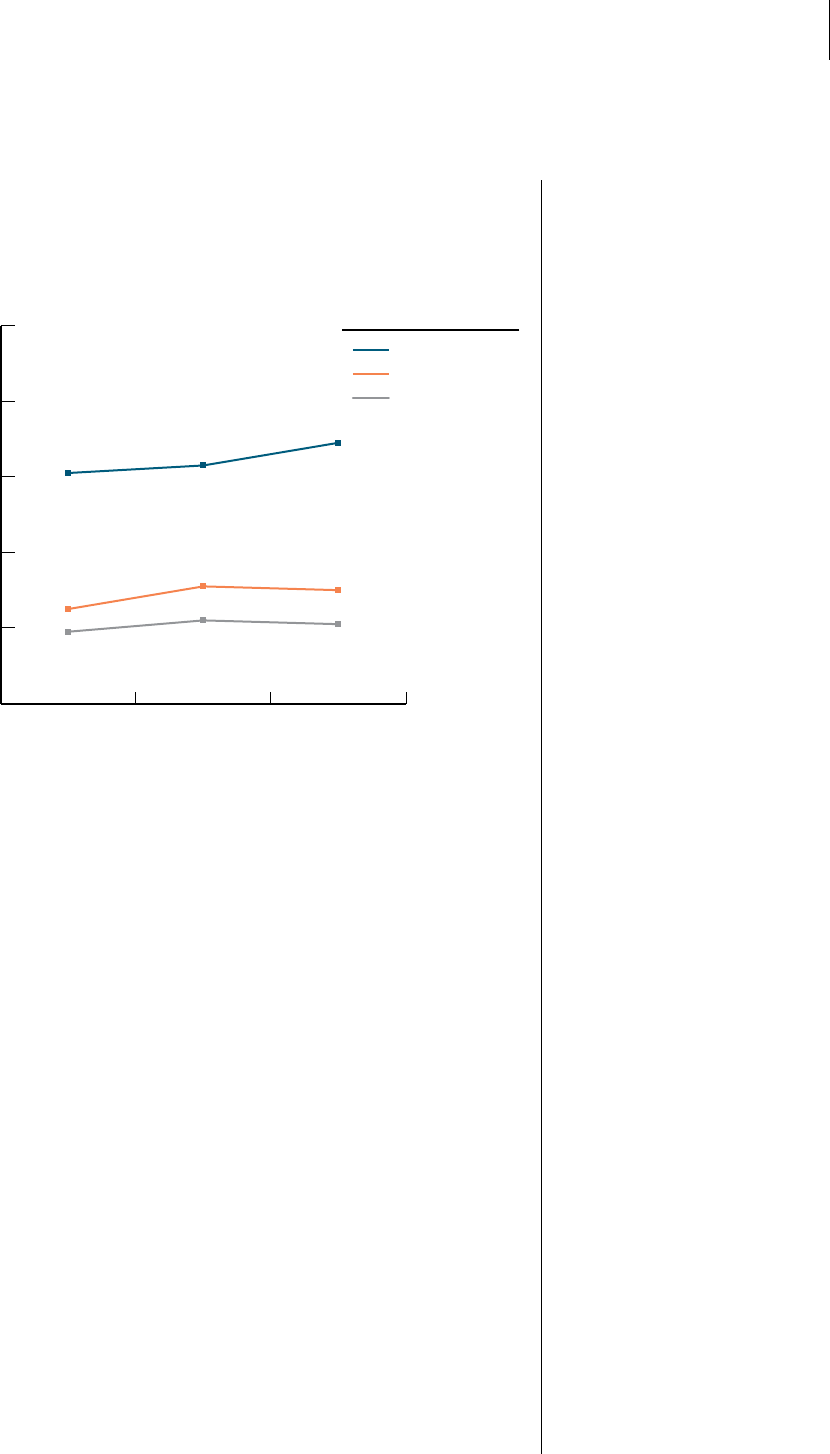
15California State Auditor Report 2016-114
February 2017
Figure 2
College Preparatory Coursework Completion Rates Vary Significantly in the
ThreeDistricts WeReviewed
Graduation Years 2013 Through 2015
Graduation Year
201520142013
College Preparatory Coursework
Completion Rate
0
20
40
60
80
100%
61%
63%
69%
25%
31%
30%
19%
22%
21%
San Francisco
Coachella Valley
Stockton
UNIFIED SCHOOL DISTRICT
Source: California State Auditor’s analysis of student data provided by CoachellaValley, SanFrancisco,
and Stockton Unified SchoolDistricts.
Note: We excluded students who left thedistrict.
As Table on page shows, the majority of students in graduation
years through in Coachella and Stockton fell off track
at some point during their high school careers and few of those
students went on to complete all the necessary college preparatory
coursework by the end of high school. Specifically, percent and
percent of Coachella and Stockton students, respectively, fell off
track at some point during their fouryears of high school, and only
percent and percent of those students were able to eventually get
back on track and meet all coursework requirements. SanFrancisco
was more successful at keeping students on the prescribed track:
percent fell off track at some point during their high school
careers and the district helped a higher percentage—percent—of
off-track students to eventually complete all the college preparatory
coursework requirements. ese data suggest that districts should
focus resources, when limited, on keeping students on track and,
in particular, on helping students successfully complete gradenine
requiredcoursework.

16 California State Auditor Report 2016-114
February 2017
Figure 3
Students Must Complete a General Sequence of Courses to Be On Track to Complete College Preparatory
Requirements by the End of Their Fourth Year
40
credits
English 4 (b)
Spanish 2 (e)
Chemistry (d)
Psychology (g)
12
th
Grade
40
credits
English 3 (b)
Algebra 2 (c)
Spanish 1 (e)
US History (a)
11
th
Grade
40
credits
English 2 (b)
Geometry (c)
World History (a)
Ceramics (f)
10
th
Grade
30
credits
English 1 (b)
Algebra 1 (c)
Biology (d)
9
th
Grade
EXAMPLE OF THE
COLLEGE PREPARATORY PORTION OF A
COURSE SCHEDULE FOR A STUDENT WHO
COMPLETES MINIMUM REQUIREMENTS
4 English (b) 2 Foreign Language
†
3 Math (c) 1 Visual and Performing Arts
2 History (a) 1 College Preparatory Elective
2 Lab Science (d)
Year 4
150 cumulative credits
3 English (b) 1 History
2 Math (c) 1 Lab Science
3 Any a–g* 1 Foreign Language
Year 3
110 cumulative credits
2 English (b)
1 Math (c)
4 Any a–g*
Year 2
70 cumulative credits
1 English (b)
2 Any a–g*
Year 1
30 credits
MINIMUM COLLEGE PREPARATORY
COURSEWORK REQUIREMENTS
TO BE CONSIDERED ON TRACK
15
courses
150
credits
Source: California State Auditor’s analysis of policies provided by CoachellaValley, SanFrancisco, and StocktonUnified School Districts, and the
University ofCalifornia (UC).
Notes: Students must pass all courses with a grade of C- orbetter.
Credits for courses attended during summer school count toward the prior schoolyear.
* a–g = History (a), English (b), Math (c), Science (d), Foreign Language (e), Visual and Performing Arts (f), College Preparatory Elective (g).
†
Although students must complete two years of foreign language courses, validation rules can be applied to meet these requirements by
successfully completing the second semester of a level2 or higher foreign languagecourse. This could reduce the number ofcumulative
creditsrequired.
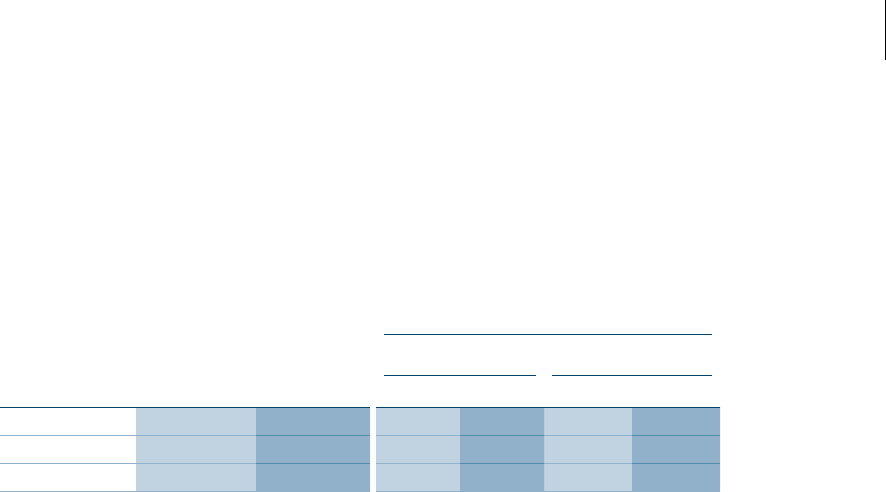
17California State Auditor Report 2016-114
February 2017
Table 3
Students Who Fell Off Track at Any Point During High School Were Not Likely to Complete College
PreparatoryRequirements
Graduation Years 2013 Through2015
RESULTS OF THE STUDENTS WHO FELL OFF TRACK
UNIFIED
SCHOOL DISTRICT
TOTAL NUMBER OF
STUDENTS WHO
FELL OFF TRACK
PERCENTAGE OF
TOTAL STUDENT
POPULATION WHO
FELL OFF TRACK
MET REQUIREMENTS
BY THE END OF HIGHSCHOOL
DID NOT MEET REQUIREMENTS
BY THE END OF HIGHSCHOOL
NUMBER PERCENTAGE NUMBER PERCENTAGE
Coachella Valley 2,459 79% 245 10% 2,214 90%
SanFrancisco 3,706 41 482 13 3,224 87
Stockton 3,904 84 212 5 3,692 95
Source: California State Auditor’s analysis of data provided by Coachella Valley, SanFrancisco, and Stockton Unified SchoolDistricts.
Note: We excluded students who left thedistrict.
Students Who Fail to Meet College Preparatory Requirements
as Freshman Are Unlikely to Complete Coursework Needed for
Admission to the State’s Public UniversitySystems
Completion rates at the threedistricts we reviewed depended
heavily on students’ ability to complete coursework on a prescribed
track beginning in gradenine. At each of the threedistricts,
we found that the majority of students who fell off this track
did so during gradenine and few of them went on to complete
the remainder of their college preparatory coursework. us, it
is imperative that districts ensure students’ enrollment in and
successful completion of college preparatory coursework beginning
in their firstyear of highschool.
Seventy-twopercent of students who fell off track in Stockton,
percent of those who did so in Coachella, and percent
of those who fell of track in SanFrancisco, fell off track during
gradenine, as Figure on the following pageshows. Of concern
is that an average of only percent of the students who fell off
track in gradenine in the threedistricts we reviewed completed
the coursework necessary to gain admission to the State’s
public university systems, which highlights the importance of
that firstyear of high school. Moreover, as Figure on page
shows, students in SanFrancisco who fell off track in gradenine
had slightly better success—percent—in completing college
preparatory coursework than comparable students in Coachella
and Stockton—at percent and percent, respectively. Falling off
track during gradenine likely presents the greatest challenge for
students because getting back on track requires them to successfully
complete an even more demanding course load than their peers

18 California State Auditor Report 2016-114
February 2017
who did not fall off track. For example, if a ninth-grade student
receives an F in English, that student would need to receive a C-or
better in both English and in a subsequent year, in addition to
passing their other necessary classes, to get back ontrack.
Figure 4
Most Students Who Fell Off Track Did So in Grade Nine
Graduation Years2013Through2015
Year of High School
12th Grade11th Grade10th Grade9th Grade
Percentage of Students
Who Fell Off Track
0
20
40
60
80
100%
9%
16%
5%
9%
13%
7%
11%
15%
8%
72%
56%
80%
Coachella Valley
San Francisco
Stockton
UNIFIED SCHOOL DISTRICT
Source: California State Auditor’s analysis of student data provided by Coachella Valley, SanFrancisco, and Stockton Unified School Districts.
Notes: We calculated the number of students who fell off track to meet college preparatory requirements during each year of school for students in
graduation years2013 through2015.
We excluded students who left the district.
Percentages may not add to 100 due to rounding.
Our analysis shows that students struggled most significantly
with English and math courses—the twosubject areas which
CSU and UC require be taken for the most years. As Figure on
page shows, we found that for students in graduation years
through, about percent of students in Stockton and
Coachella did not meet the English and math college preparatory
course requirements. In SanFrancisco, about percent of students
didnot meet these requirements. We found that, on average,
percent of Stockton students, percent of Coachella students,
and percent of SanFrancisco students did not pass a college
preparatory English class by the end of gradenine. Further, on
average, about percent of students in Stockton, percent of
students in Coachella, and percent of students in SanFrancisco
had not passed a college preparatory math class by grade.
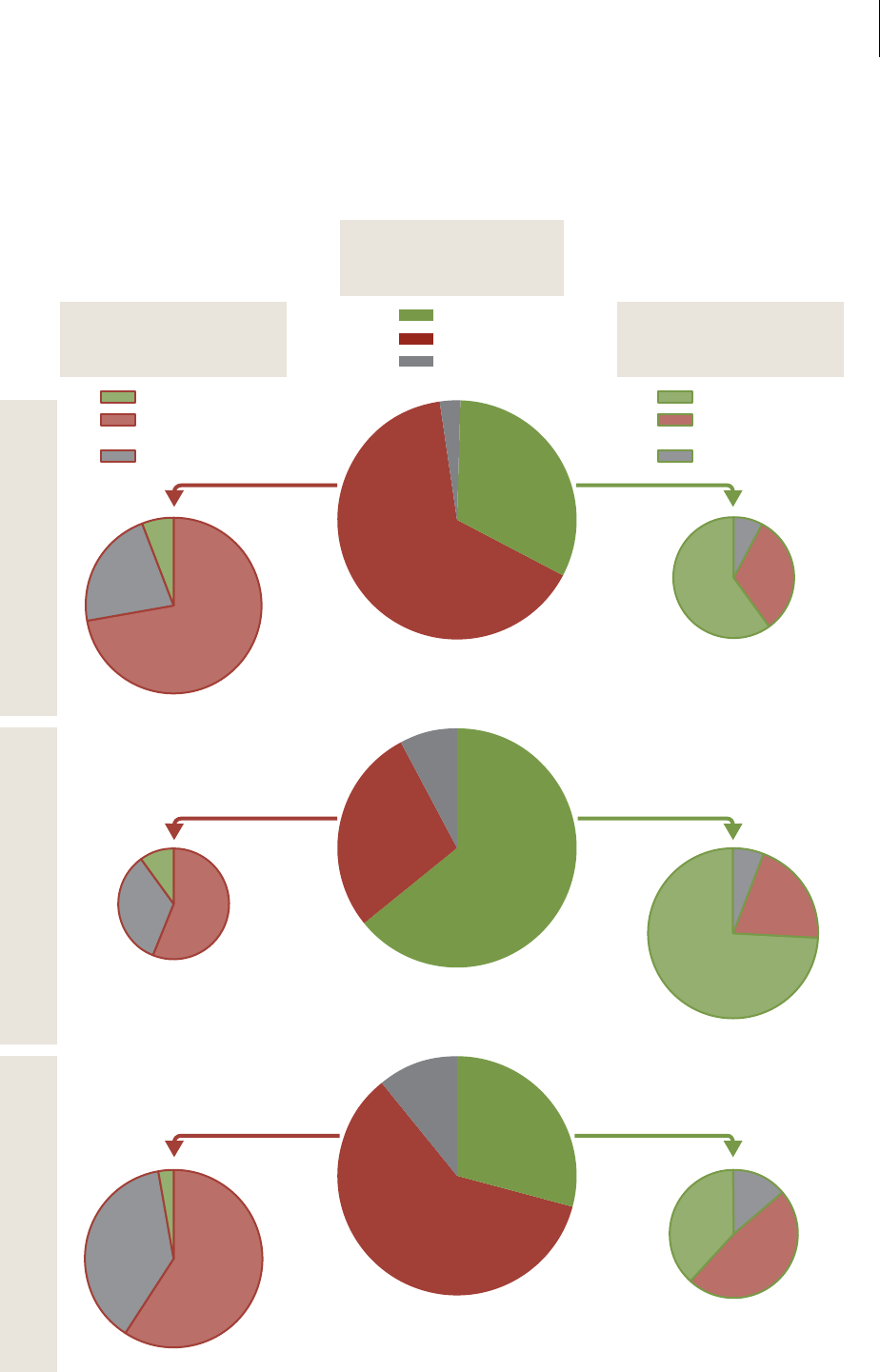
19California State Auditor Report 2016-114
February 2017
Figure 5
Most Students Who Fell Off Track in Grade Nine Did Not Complete College PreparatoryCoursework
Graduation Years 2013 Through 2015
48%
38%
14%
11%
29%
74%
20%
6%
64%
28%
8%
60%
32%
8%
65%
32%
3%
60%
38%
59%
3%
56%
34%
10%
22%
72%
6%
Met requirements
Did not meet
requirements
Left district
Results of Students Who Were
On Track in Ninth Grade
at the End of High School
On track
Off track
Left district
Percentage of Students
On or Off Track at the
End of Ninth Grade
Met requirements
Did not meet
requirements
Left district
Results of Students Who Were
Off Track in Ninth Grade
at the End of High School
Stockton
Unified School District
San Francisco
Unified School District
Coachella Valley
Unified School District
Source: California State Auditor’s analysis of student data provided by CoachellaValley, SanFrancisco, and Stockton Unified SchoolDistricts.

California State Auditor Report 2016-114
February 2017
20
Many Stockton and Coachella students needed additional assistance
in gradenine to pass some college preparatory courses. Districts
offer support classes to provide supplementary or preventative
assistance to help students successfully complete college preparatory
coursework. Districts enroll students in these support courses when
they determine that students are not academically prepared for
college preparatory coursework. ese classes can be taken before
enrolling in a college preparatory course or simultaneously. We
reviewed districts’ enrollment figures for support classes and found
that an average of percent of Coachella’s gradenine students
enrolled in a math support class and percent of gradenine
students enrolled in an English support class. e executive
curriculum director at Stockton indicated that a barrier to college
preparatory coursework completion is a lack of students adequately
prepared for grade level coursework as freshmen. In Stockton, the
district identified math support courses in which percent of its
gradenine students were enrolled. In contrast, SanFrancisco’s policy
is to automatically enroll students in college preparatory courses,
rather than supportcourses.
e percentage of students enrolled in college preparatory courses
does not appear to have a significant impact on completion rates.
ere is not a noteworthy gap between districts related to the
percentage of students enrolled in college preparatory courses.
As Figure on page shows, SanFrancisco enrolled an average
of only percent more of its gradenine students in college
preparatory English courses than did Stockton for graduating years
through. Given that SanFrancisco’s completion rate is
considerably higher than Coachella’s and Stockton’s, it appears that
factors other than the enrollment rates in those courses influenced
completionrates.
Funds to help kindergarten through gradeeight students prepare
for the rigor of college preparatory coursework could help keep
more high school students on track to complete the coursework
requirements by their senior year. In the Legislature approved
a similar funding strategy for high school students. e College
Readiness Block Grant (Block Grant) allocated million to
provide additional support to high school students, particularly
unduplicated students, to increase the number of students who
enroll in institutions of higher education and complete a bachelor’s
degree within fouryears. Districts could use those funds for
support activities such as professional development, counseling
programs, and programs to expand access to classes to satisfy the
college preparatory courseworkrequirements.
Many Stockton and Coachella
students needed additional
assistance in grade nine to pass
some college preparatorycourses.
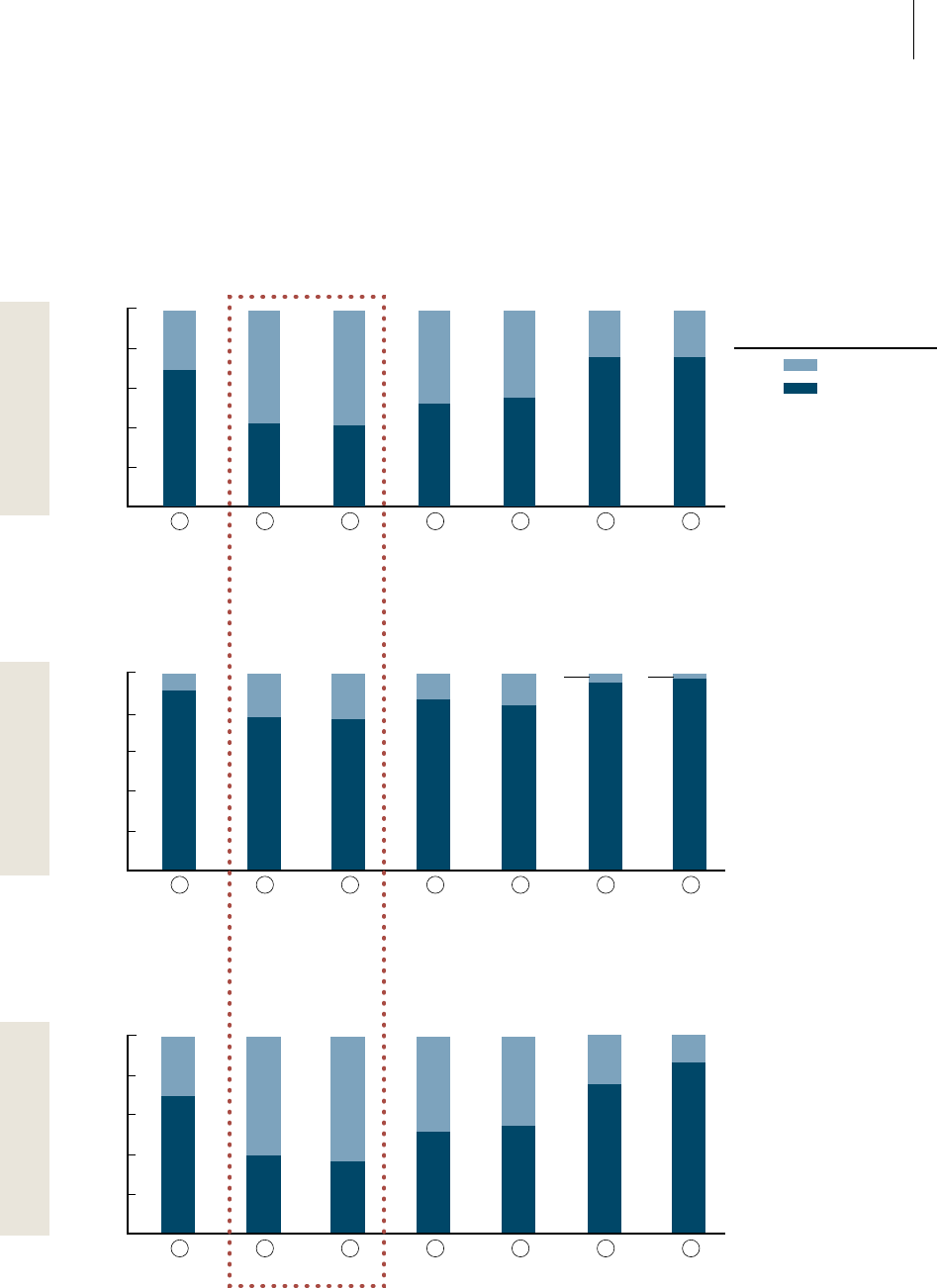
21California State Auditor Report 2016-114
February 2017
Figure 6
English and Math Requirements Presented the Greatest Challenge to Students
Graduation Years 2013 Through 2015
Subject Area
College
Preparatory
Elective
Visual and
Performing
Arts
Foreign
Language
Lab
Science
MathEnglishHistory
GFEDCBA
Percentage of Students
0
20
40
60
80
100%
Subject Area
College
Preparatory
Elective
Visual and
Performing
Arts
Foreign
Language
Lab
Science
MathEnglishHistory
GFEDCBA
Percentage of Students
0
20
40
60
80
100%
Subject Area
College
Preparatory
Elective
Visual and
Performing
Arts
Foreign
Language
Lab
Science
MathEnglishHistory
GFEDCBA
Percentage of Students
0
20
40
60
80
100%
31% 58% 59% 48% 45% 25% 25%
69% 42% 41% 52% 55% 75% 75%
Not Met
Met
COLLEGE PREPARATORY
COURSEWORK REQUIREMENTS
10% 23% 24% 13% 17%
6%
4%
90% 77% 76% 87% 83% 94% 96%
31% 61% 64% 49% 46% 25% 14%
69% 39% 36% 51% 54% 75% 86%
Stockton
Unied School District
San Francisco
Unied School District
Coachella Valley
Unied School District
Source: California State Auditor’s analysis of data provided by CoachellaValley, SanFrancisco, and Stockton Unified SchoolDistricts.
Note: We excluded students who left the district.
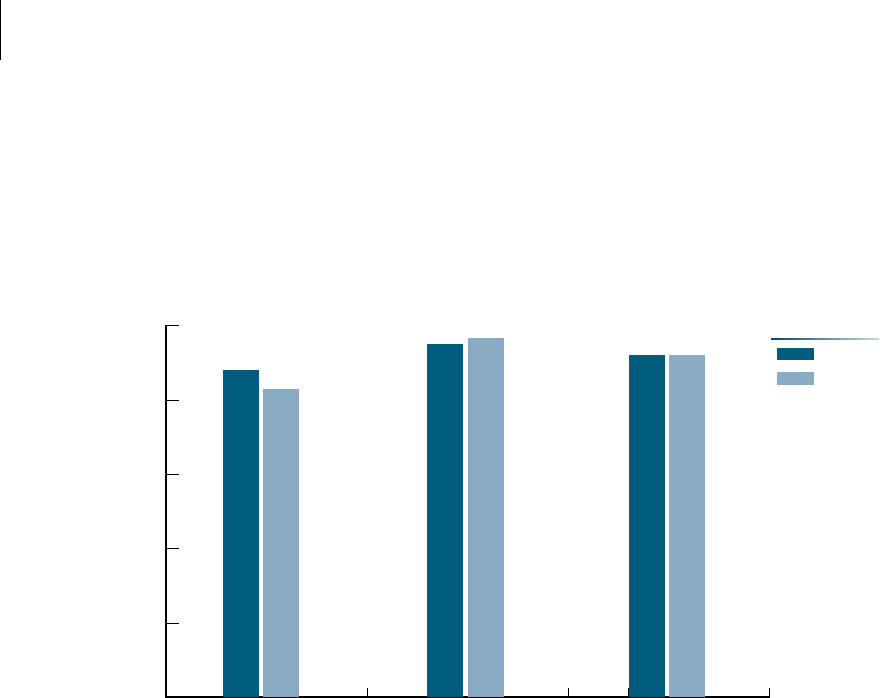
22 California State Auditor Report 2016-114
February 2017
Figure 7
Average Enrollment Rates in College Preparatory Math and English Courses in Grade Nine Did Not Vary
Significantly
Graduation Years 2013 Through 2015
Unified School District
StocktonSan FranciscoCoachella Valley
Percentage of Students Enrolled
0
20
40
60
80
100%
92%
92%
97%
95%
83%
88%
English
Math
SUBJECT AREA
Source: California State Auditor’s analysis of student data provided by Coachella Valley, SanFrancisco, and Stockton Unified SchoolDistricts.
SanFrancisco presented a plan for its Block Grant that focused on
college counseling, city college dual enrollment efforts, and using
micro funding tailored to meet individual school needs. Stockton’s
approach included increasing services to high school students,
specifically its unduplicated students, through increased staffing
oversight, covering assessment fees for standardized tests for
college admission, and assigning a dedicated mentor to incoming
students to support them throughout their high school experience.
Stockton plans to establish a freshman boot camp to support
incoming students, followed by field trips to colleges. Students
would have the opportunity to meet with counselors who review
assessments and transcripts. Stockton also plans to enhance its
data collection efforts to measure the effectiveness of its plans.
According to the director of state and federal projects at Coachella,
the district has yet to submit its plan to Education, but plans to do
so in February. We believe that similar funding and support
strategies targeted at kindergarten through gradeeight students
could help prepare California’s students for meeting the minimum
coursework requirements needed for admission to UC andCSU.

23California State Auditor Report 2016-114
February 2017
Although the Schools We Reviewed Appear to Have Provided
Sufficient Access to College Preparatory Coursework for Certain Years,
the Data Were SignificantlyLimited for Other Years
State law requires school districts that maintain any grades
fromseven to inclusive to offer all of their students coursework
that will allow them to meet the minimum requirements for
admission to California’s public postsecondary educational
institutions. To evaluate whether sufficient access existed, we
reviewed the percentage of total courses offered at each of the
threedistricts we visited, and found that the percentages did not
vary significantly among the districts. Specifically, in–,
percent and percent of all the courses offered at Coachella
and Stockton, respectively, were college preparatory courses. In
SanFrancisco, this percentagewas. We also conducted a detailed
course-by-course analysis by reviewing the schedules of courses
offered at two high schools in each of threeschool districts and
compared the courses offered to the schools’ enrollments. When
the schools had maintained the information we needed, we found
that they had provided students with sufficient access to college
preparatory coursework. is finding suggests that access did not
present a significant barrier to the completion of college preparatory
courses. However, fourof the sixhigh schools were unable to supply
us with the data necessary to determine that they had provided
sufficient access for all years in our auditperiod.
e data available suggests that adequate capacity existed to allow
students to take the full range of college preparatory requirements
during gradesnine through at the sixschools we selected. For
example, to allow students to take the required fouryears of college
preparatory English, traditional semester-based high schools
should offer access to these classes for percent of their students
every year. e twoschools in Coachella exceeded this obligation
during the years for which data were available: Coachella Valley
High School provided a sufficient number of seats for percent
of its students in –, and Desert Mirage High School
provided enough seats for percent of its students in –
as AppendixA beginning on page demonstrates. Likewise,
SanFrancisco offered seats for more than percent of its
students at Mission and Washington high schools during –
and –—the years for which the schools were able to provide
usabledata.
In Stockton, however, Franklin High School satisfied the minimum
English access requirement by enrolling students past the maximum
capacity of students per section. For example, Franklin High
School overenrolled students in different English sections.
e Franklin High School principal did not respond to our
numerous requests for perspective on this issue. Moreover, during
When the schools had maintained
the information we needed, we
found that they had provided
students with sufficient access to
college preparatorycoursework.

California State Auditor Report 2016-114
February 2017
24
that same period, Franklin High School enrolled students in other
college preparatory courses, such as chemistry and earth science,
beyond the maximum capacity for sections of those courses. We also
reviewed course enrollments during – at George Washington
High School in SanFrancisco and Desert Mirage High School in
Coachella. At George Washington High School, we found students
overenrolled in college preparatory sections, and at Desert Mirage
High School we identified fourstudents who were overenrolled. us,
although these high schools technically met the access requirement—
Franklin High School in particular—they did so in a manner that
may have negatively affected the success of all the students in those
overenrolledsections.
Furthermore, although each high school we reviewed did not meet
the minimum access requirements in every category for every
year, as TableA beginning on page in Appendix A shows, these
deficiencies were unlikely to have affected students’ opportunities
to complete all of the college preparatory requirements. For
example, several schools failed to meet the minimum two-year
foreign language requirement. However, admissions criteria allow
students to take only oneyear of a foreign language if it is a higher
level course, potentially decreasing the number of foreign language
courses that schools need to offer.
5
In other instances, schools
that did not offer enough college preparatory elective classes had
excess capacity in other course categories such as English or foreign
language, so students could take those courses to satisfy their elective
requirements. TableA includes explanations for why some schools’
failure to meet certain access targets likely did not harmstudents.
Additionally, we verified that all of our selected schools other than
Coachella Valley High School offered courses with sufficient frequency
so that students had the ability to take the courses they needed during
the school day in –. In other words, we did not identify any cases
in which a school offered all courses for multiple categories—such as
English and math—during the same period of the day. us, the times
at which schools offered courses did not present a barrier to students’
access to those classes for–. We were unable to verify that
Coachella Valley High School offered courses with sufficient frequency
throughout the school day because it did not retain thisinformation.
e manner in which our selected schools built their course schedules
likely resulted in them offering sufficient access to college preparatory
courses for the years we were able to review. e schools within
our selected districts asserted that each year they used a number
of factors to build their course schedules, including schedule types,
5
There are several other ways to validate the foreign language requirement, including certification
by a high school principal and assessment by a college oruniversity.
We did not identify any cases in
which a school offered all courses
for multiple categories—such as
English and math—during the
same period of theday.

25California State Auditor Report 2016-114
February 2017
graduation requirements, and student requests. ese factors enabled
the schools to determine which college preparatory courses students
wanted or needed each year. When we spoke with other districts,
including SanDiego Unified and Vallejo City Unified, they stated
that—similar to SanFrancisco—they provide sufficient access based
on college preparatory-aligned graduationrequirements.
Although we were able to reach certain conclusions about
course access at the sixhigh schools we selected, significant data
limitations impeded our ability to definitively determine whether
the schools in the districts we reviewed provided adequate course
access for each year we reviewed from– through–.
For example, SanFrancisco’s former data system, which it used
through–, did not track whether the courses it offered
were for a semester or a full year. Coachella’s practice has been to
mark courses that ended before the final term of the school year as
inactive, which made it appear that Coachella failed to offer courses
even though it did actually offer them. Stockton, as we discuss later,
incorrectly marked courses as college preparatory coursework
certified, even though UC had not certified them. However, our
review did not address whether the districts as a whole were
offering appropriate levels of access to college preparatory courses
because that would require evaluating every high school in
thedistrict.
Districts would need to conduct analyses similar to what we
performed to demonstrate they are offering appropriate levels of
access; however, none of the three we reviewed have done so. e
data limitations we identified serve to illustrate the improvements
in data retention and analysis that would be necessary for districts
to demonstrate whether they provide all students with required
access to college preparatory coursework. Without the proper data
systems and processes in place, the districts cannot demonstrate to
their stakeholders that they are complying with statelaw.
Although Achievement Gaps Exist in All Three Districts We Reviewed,
Certain Subgroups of Students Fared Better in SanFrancisco Than in
Coachella andStockton
In all threedistricts we reviewed, we identified achievement gapsin
completing college preparatory coursework; however, certain
subgroups of students—such as underrepresented minorities,
and English learners—generally fared better in SanFrancisco
than in Coachella or Stockton.
6
As we show in Figure, on the
6
We used UC’s definition for underrepresented minorities. Specifically, UC considers
underrepresented minorities to be Chicanos/Latinos, African Americans, and AmericanIndians.
Significant data limitations impeded
our ability to definitively determine
whether the high schools in the
districts we reviewed provided
adequate course access for each year
wereviewed.
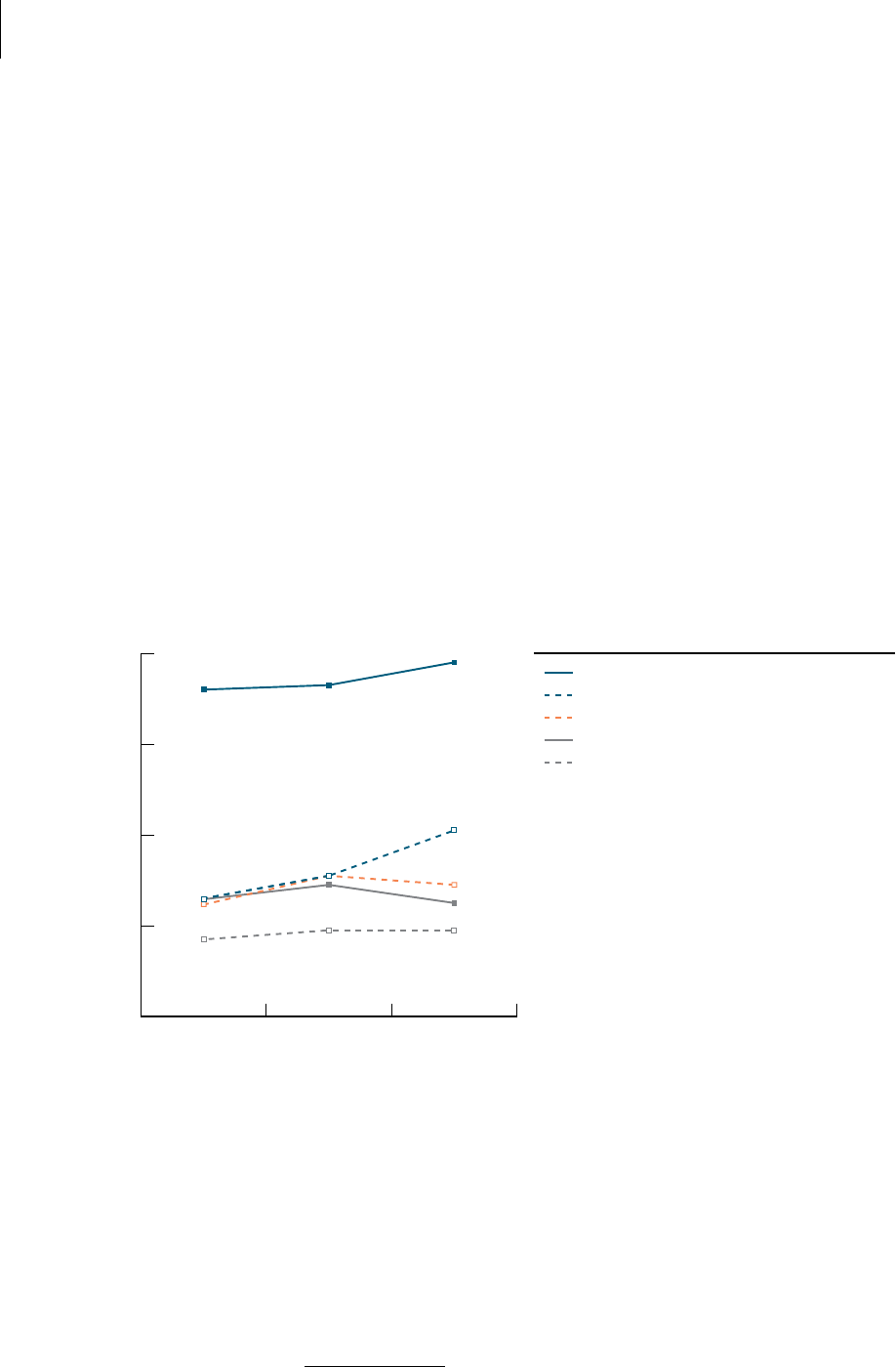
26 California State Auditor Report 2016-114
February 2017
following page, for students in graduation years through,
underrepresented minorities’ completion rates in SanFrancisco
ranged from percent to percent.
7
ese rates were generally
less than half of those of white and Asian students, ranging from
percent to percent. Stockton’s achievement gap narrowed for
students in graduation years through due to the declining
completion rate among white and Asian students. Stockton’s
underrepresented minorities’ completion rates ranged from
percent to percent, whereas completion rates for white and
Asian students ranged from percent to percent. In Coachella,
the completion rates for underrepresented minorities ranged from
percent to percent.
Figure 8
Completion Rate Achievement GapsExist Among Demographic Subgroups
Graduation Years 2013 Through 2015
San Francisco—White/Asian
San Francisco—Underrepresented Minorities
Coachella Valley—Underrepresented Minorities
Stockton—White/Asian
Stockton—Underrepresented Minorities
UNIFIED SCHOOL DISTRICT AND STUDENT DEMOGRAPHIC
Graduation Year
201520142013
College Preparatory Coursework
Completion Rate
0
20
40
60
80%
72%
73%
78%
25%
31%
29%
26%
31%
41%
26%
29%
25%
17%
19% 19%
Source: California State Auditor’s analysis of student data provided by CoachellaValley, SanFrancisco, and Stockton Unified SchoolDistricts.
Notes: We did not include students who identified as white or Asian in Coachella because the subgroup is made up of fewer than 50students.
State law instructs the California Department of Education to report completion rates only for subgroups whose population exceeds
50students.
For the purpose of this analysis, we used the University of California’s (UC) definition for underrepresented minorities. Specifically, UC considers
underrepresented minorities to be Chicano/Latino, African American, and AmericanIndian.
We excluded students who left the district.
7
We did not include students who identified as white or Asian in Coachella because the subgroup
is made up of fewer than students. State law instructs Education to report completion rates
only for subgroups whose population exceeds students.
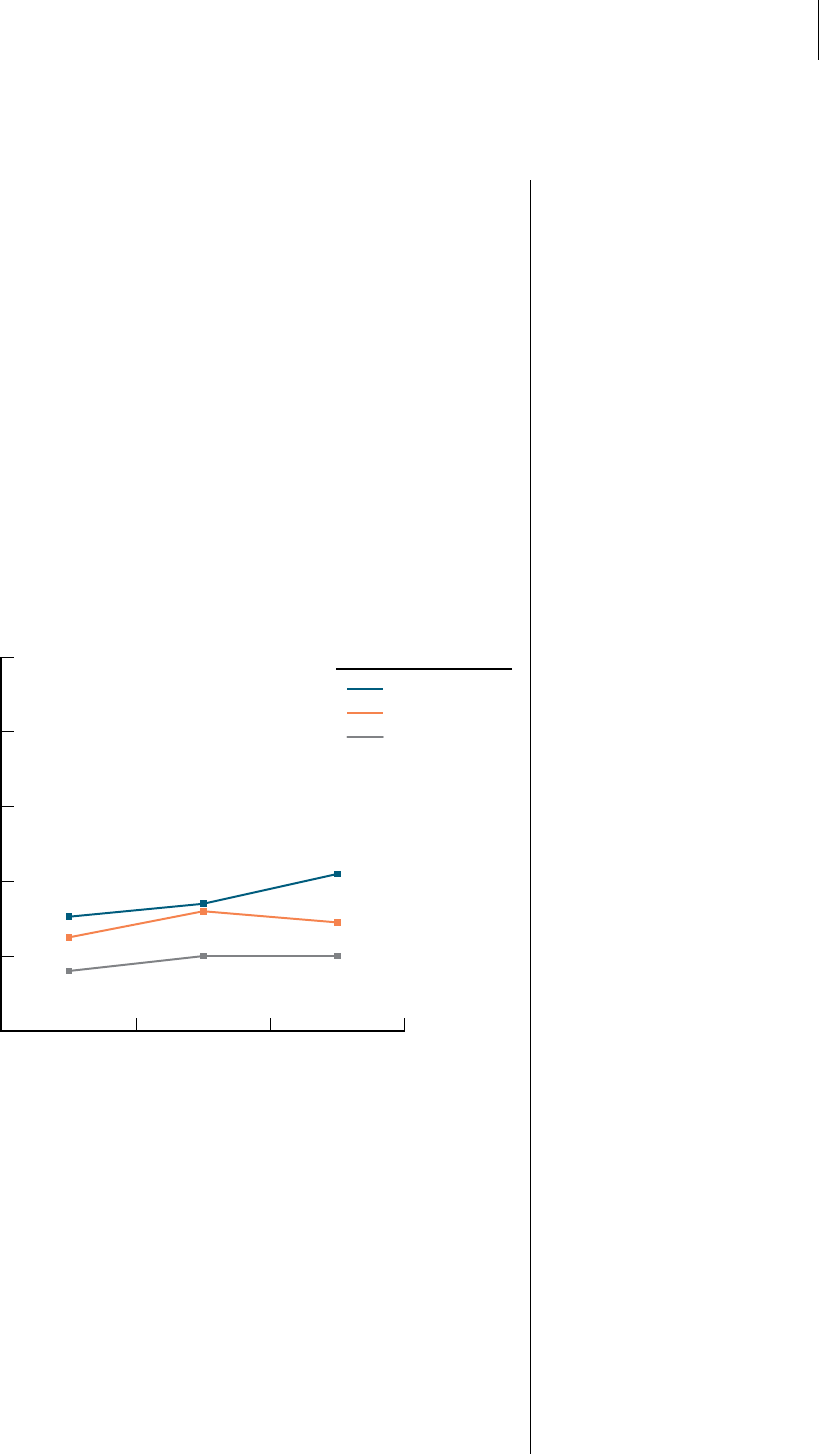
27California State Auditor Report 2016-114
February 2017
Moreover, an appreciably higher percentage of Chicano/Latino
students in SanFrancisco completed college preparatory
requirements than did so in the other twodistricts we
reviewed. Specifically, percent of Chicano/Latino students
in SanFrancisco’s graduating class completed all college
preparatory coursework, compared to only percent in Coachella
and percent in Stockton, as Figure shows. Chicano/Latino
students averaged percent of the student population in
Coachella, percent of the student population in Stockton, and
percent of the student population in SanFrancisco from–
through–.
Figure 9
Chicano/Latino Students in SanFrancisco Completed College Preparatory
Coursework at Higher Rates Than in Coachella Valley or Stockton
Graduation Years 2013 Through 2015
Graduation Year
201520142013
College Preparatory Coursework
Completion Rate
0
20
40
60
80
100%
San Francisco
Coachella Valley
Stockton
UNIFIED SCHOOL DISTRICT
29%
34%
42%
25%
32%
29%
16%
20% 20%
Source: California State Auditor’s analysis of student data provided by CoachellaValley, SanFrancisco,
and Stockton Unified SchoolDistricts.
Note: We excluded students who left the district.
Furthermore, SanFrancisco’s completion rate for unduplicated
students—students who are eligible to receive free or reduced price
meals at school, English learners, and youth in foster care—was
threetimes that of similar students in Stockton and twotimes
that of students in Coachella, as Figure on the following page
illustrates. English learners—a subgroup of unduplicated students—
in SanFrancisco also had significantly higher completion rates than
those in Stockton and Coachella, as we show in Figure on page.
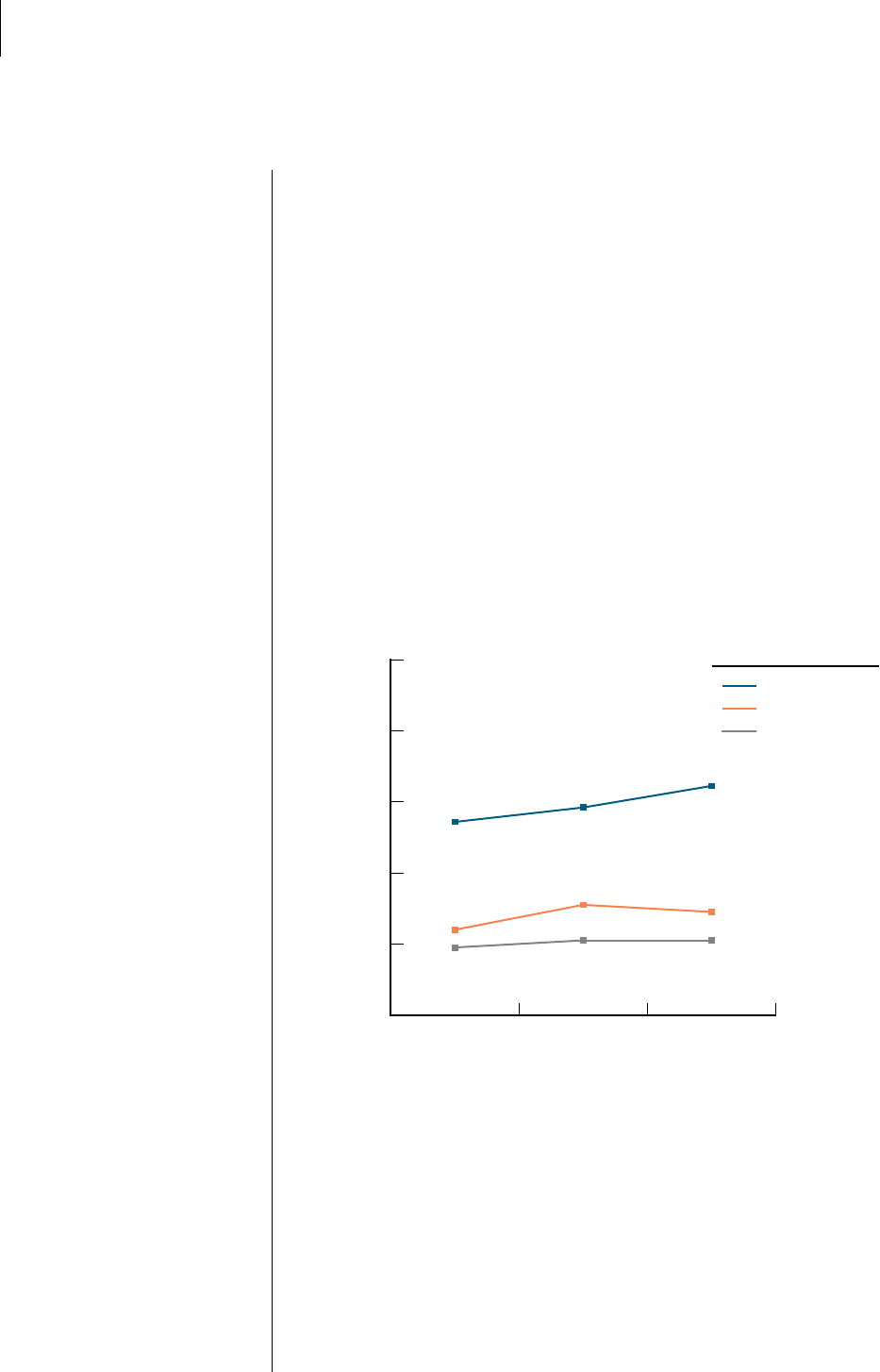
California State Auditor Report 2016-114
February 2017
28
However, English learners had the lowest completion rate out of
any subgroup we evaluated across all districts. Interestingly, we
found that reclassified English learners had higher completion rates
than English-fluent students across all threedistricts as TableB.
on page in Appendix B shows. Reclassified English learners are
students who were initially classified as English learners but who
subsequently met criteria for English proficiency. Completion
rates for reclassified English learners in graduation years
through ranged from percent to percent in SanFrancisco,
from percent to percent in Coachella, and from percent
to percent in Stockton. ese completion rates ranged from
percent to percent higher than those of English-fluent students
within the same districts over the same timeperiod.
Figure 10
Completion Rate for Unduplicated Pupils in SanFrancisco Was Notably Higher
Than in CoachellaValley orStockton
Graduation Years 2013 Through 2015
San Francisco
Coachella Valley
Stockton
UNIFIED SCHOOL DISTRICT
Graduation Year
201520142013
College Preparatory Coursework
Completion Rate
0
20
40
60
80
100%
55%
58%
64%
24%
31%
29%
19%
21% 21%
Source: California State Auditor’s analysis of student data provided by CoachellaValley, SanFrancisco,
and Stockton Unified SchoolDistricts.
Notes: State law defines unduplicated pupils as youth in foster care, students eligible to receive free
or reduced price meals, and Englishlearners.
We excluded students who left the district.
When we questioned staff at the threedistricts, we received
disparate opinions regarding the reasons for the achievement gaps.
e assistant superintendent of SanFrancisco indicated that he was
aware of the achievement gaps and was pleased that they appeared
to be narrowing; however, he does not have perspective about
why they exist. e executive director of curriculum for Stockton
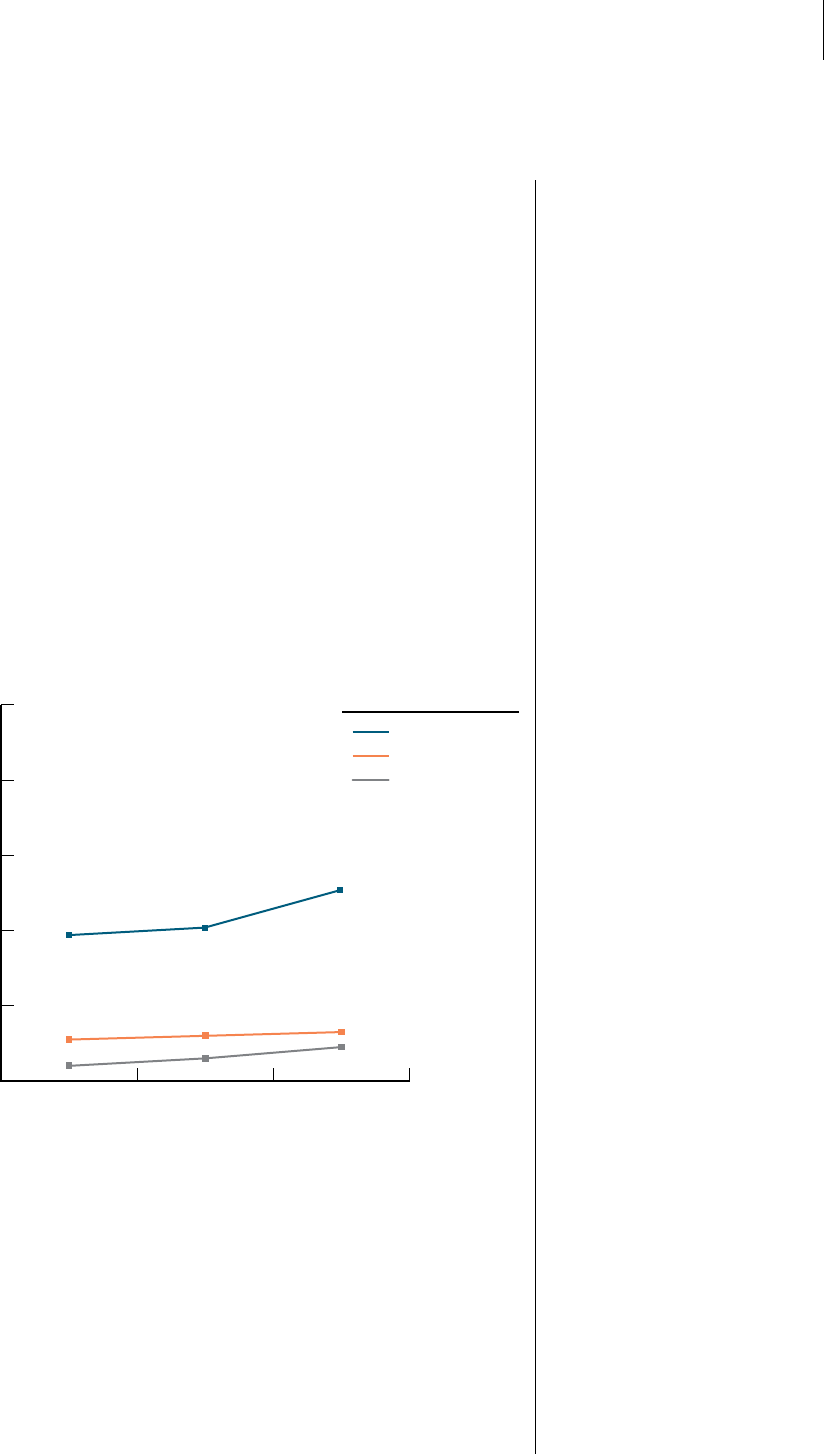
29California State Auditor Report 2016-114
February 2017
contended that multiple factors may affect outcomes for students
of different ethnic backgrounds, including cultural expectations as
reflected in the UC enrollment data. Principals from SanFrancisco
and Stockton, and counselors from Coachella, indicated that
English learners face challenges to completing college preparatory
coursework. Onestated that this is in part because they are learning
the English language while at the same time they are expected to
learn the curriculum in English. However, staff from Coachella
indicated that reclassified English learners have higher completion
rates because these students receive significant support from their
districts and schools, and staff from Stockton and SanFrancisco
indicated that meeting the high reclassification standards requires
enormous effort on the part of thestudents.
Figure 11
English Learners in SanFrancisco Had Significantly Better College
PreparatoryCourse Outcomes
Graduation Years 2013 Through 2015
Graduation Year
201520142013
College Preparatory Coursework
Completion Rate
0
20
40
60
80
100%
San Francisco
Coachella Valley
Stockton
UNIFIED SCHOOL DISTRICT
39%
41%
51%
11%
12%
13%
4%
6%
9%
Source: California State Auditor’s analysis of student data provided by CoachellaValley, SanFrancisco,
and Stockton Unified SchoolDistricts.
Note: We excluded students who left the district.
By Implementing Best Practices, Districts May Be Able to Improve
Students’ College Preparedness
As we discuss throughout this chapter, SanFrancisco has been
consistently more successful than the other twodistricts we reviewed
in ensuring that students complete college preparatory coursework.

California State Auditor Report 2016-114
February 2017
30
Not only has SanFrancisco aligned its coursework graduation
requirements with the minimum coursework necessary for admission
to UC and the CSU, it also employs a variety of best practices to
provide students with sufficient support during their high school
careers. ese practices include a process to identify students who
have fallen off track to complete college preparatory coursework
requirements, targeted interventions for students who do not
meet college preparatory coursework requirements, various credit
recovery options, and a robust centralized process to ensure course
certification. Although Stockton and Coachella offered their own
best practices, opportunities remain for improvement, particularly
with regard to course certification processes and to providing more
consistent identification of and assistance to students who are
struggling to meet college preparatoryrequirements.
SanFrancisco Has Implemented a System to Provide Timely Interventions for
Students Who Fall Off Track for Completing College Preparatory Coursework
e districts we visited have implemented support services to
assist students who are struggling to complete college preparatory
coursework, and they have established pathways for students to
recover credits. However, SanFrancisco has taken the additional
step of implementing a systematic districtwide identification
and intervention for students who are at risk of not meeting the
coursework requirements for admissions eligibility to the State’s public
universities. According to SanFrancisco’s executive director of the
office of college and career readiness, the district’s high completion
rates are due to several factors. In addition to its alignment of
its graduation coursework requirements with college preparatory
coursework requirements, SanFrancisco attributes its success to its
centralized process and ongoing identification of off track students
coupled with targeted interventions for thosestudents.
SanFrancisco implemented a process to identify students who
have fallen off track to completing college preparatory coursework
requirements. SanFrancisco’s executive director of the office of college
and career readiness explained that the district began identifying
students who were off track to complete college preparatory
requirements in– after working with Stanford University to
develop its off track definitions. SanFrancisco’s policy defines students
as off track if they do not receive a grade of D or better in college
preparatory courses or do not complete a specific number of credits
dependent on their grade level.
8
8
Although SanFrancisco students must complete the full sequence of college preparatory
coursework, they only need to receive a grade of D or better in these classes to graduate.
However, to be eligible for admission to the State’s public university systems, students must
receive a grade of C- or better in theseclasses.
Although all the districts we
visited have implemented some
support services, SanFrancisco
has taken the additional step
of implementing a systematic
districtwide identification and
intervention for students who
are at risk of not meeting the
courseworkrequirements.

31California State Auditor Report 2016-114
February 2017
SanFrancisco’s policy involves both districtwide and local efforts
during fall and spring semesters. e district creates a list of
students who have fallen off track. Although school counselors
in the other districts we reviewed meet with students at various
times throughout the school year and document those meetings
in different ways, SanFrancisco school counselors are required to
meet with the off track students, discuss credit recovery options
such as summer and evening school, and document the conference
using academic review plans that record student progress toward
completion of coursework requirements. Further, SanFrancisco
sends a letter to the parents of students who have fallen off track
and conducts a series of community meetings to meet with
families of students who are not meeting grade-levelrequirements.
ese targeted interventions are an important component
of SanFrancisco’s high college preparatory coursework
completionrates.
Coachella lacks similarly robust processes to intervene with
students who have fallen off track to complete college preparatory
coursework. Beginning in –, Coachella contracted with the
Riverside County Office of Education (Riverside County) to conduct
a college preparatory transcript analysis. Riverside County’s analysis
identifies whether students are off track, on track, or potentially on
track to meeting college preparatory requirements. However, the
analysis only recommends course schedule alterations for students
who are close to meeting or are already meeting requirements,
but not for students determined to be off track. ere is no policy
requiring counselors to meet with all students who are identified
as not meeting college preparatory requirements. e director of
secondaryeducation said it would not be effective to alter course
schedules for students who do not have a possibility of getting back
on track to meet the college preparatory courseworkrequirements.
Stockton has no process in place to identify whether a student
has fallen off track or to intervene when students are not on track
to meet college preparatory requirements. Instead, the executive
director of curriculum explained that the district expects counselors
to review graduation progress with students and to discuss their
college preparatory coursework completion progress as part of
those meetings. However, the lack of a formal process means that
the district has no way of ensuring that all affected students receive
such meetings or that the meetings include discussions of the
actions the students should take to ensure they complete the college
preparatory coursework. We believe districts without criteria for
determining whether students are meeting college preparatory
requirements and formal processes for intervening when students
fall off track may not be adequately supporting students at a critical
point in their academiccareers.
Unlike San Francisco, Coachella and
Stockton have no policy requiring
counselors to meet with all students
who are identified as not meeting
college preparatoryrequirements.
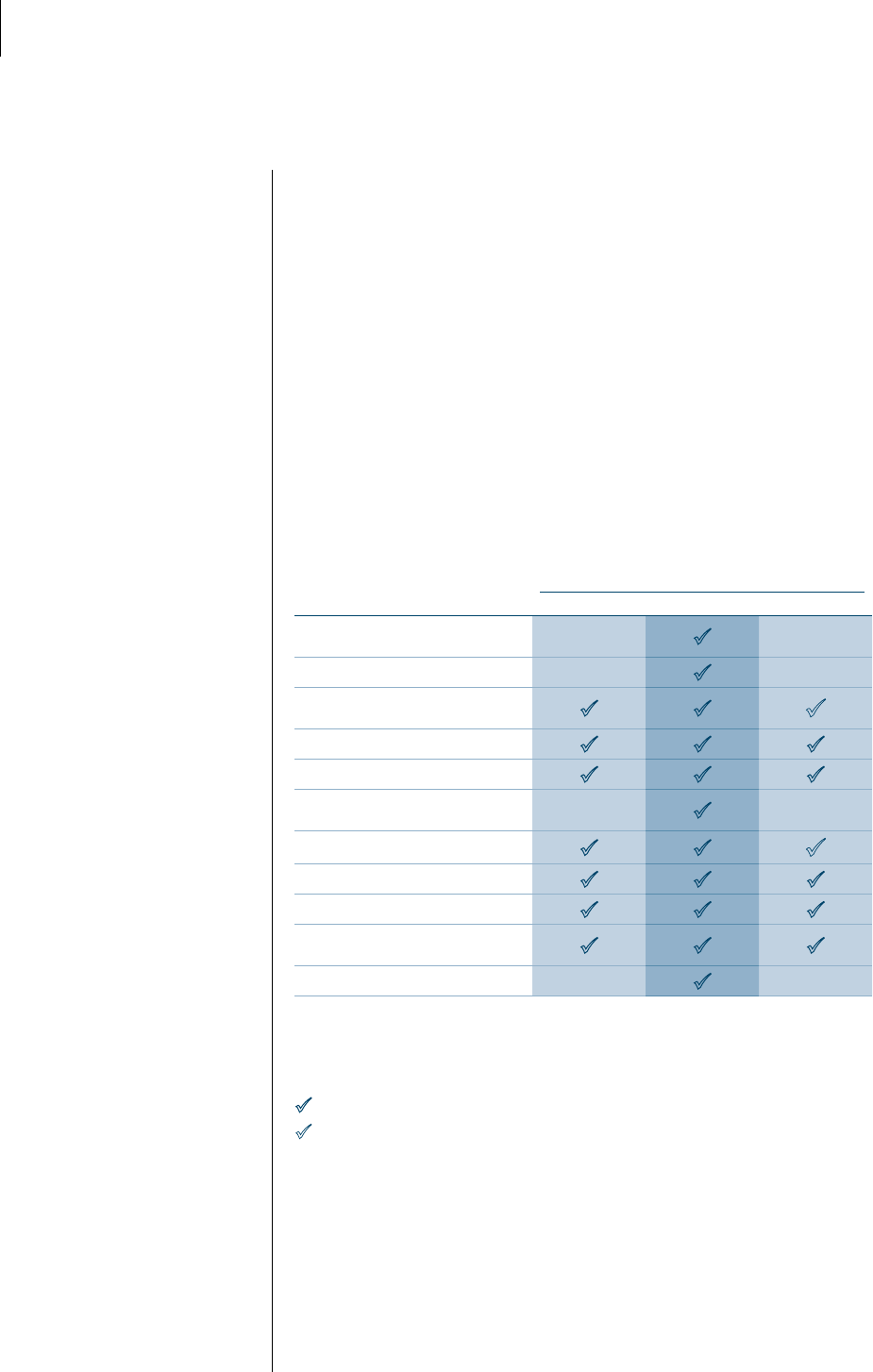
California State Auditor Report 2016-114
February 2017
32
SanFrancisco Offers More Comprehensive Programs to Assist Struggling
Students Than the Other Districts We Reviewed
We met with personnel in each district we reviewed to discuss best
practices and found that the approaches the three districts employed
in achieving college readiness for their students varied significantly,
as we show in Table. Reported practices ranged from district-level
physical and mental wellness centers to school-specific efforts, such
as freshman mentoring groups led by faculty and administrators. We
found that SanFrancisco offered a more comprehensive selection of
programs to assist students than did either Coachella or Stockton,
which likely contributes to its higher completionrates.
Table 4
Districts and Schools Employ a Variety of Best Practices
UNIFIED SCHOOL DISTRICT
BEST PRACTICES COACHELLA VALLEY SANFRANCISCO STOCKTON
Robust centralized process for college
preparatory coursework certification
Credit recovery—Saturday school
Credit recovery—evening school/
extended school day
Credit recovery—online courses
Credit recovery—summer school
Robust district level college preparatory
coursework off track reports
City college dual enrollment
Fifth year graduation option
After school tutoring
Academies/special programs within
comprehensive high schools
District counseling handbook
Source: California State Auditor’s interviews with school and district personnel from
CoachellaValley, SanFrancisco, and Stockton Unified SchoolDistricts.
Note: We asked each district to provide a list of practices that they asserted helped them in
improving college preparatory completion rates and supportingstudents.
= Best practice present throughout district.
= Best practice reported as present throughout district, but support not provided.
SanFrancisco attributes its student college preparatory success in
part to intervention systems such as credit recovery options for
students who need to retake courses. For example, although all
threedistricts reported offering several credit recovery options for
students, SanFrancisco provided the greatest variety of options. Its
offerings included Saturday school, summer school, extended day,
evening, online courses, enrollment in community colleges, and a
fifthyear graduation option.

33California State Auditor Report 2016-114
February 2017
Stockton’s and Coachella’s credit recovery offerings were inconsistent
from year to year. For example, Edison High School in Stockton at
onepoint provided Saturday school; however, it stopped offering the
program when the grant that funded it was discontinued. Similarly,
Coachella currently offers credit recovery by providing summer
school; however, this option has only been available for the past
twoyears. Moreover, SanFrancisco enrolled more students in its credit
recovery options than Coachella—percent compared to percent,
respectively. SanFrancisco provided data showing that more than
,students enrolled in credit recovery offerings in–. e
largest of these programs were evening and summer school. Stockton
was not able to provide data related to enrollment in its credit
recoveryoptions.
SanFrancisco is able to provide additional credit recovery
options in part using supplemental local funding through a grant
program it calls Sprout. According to the executive director of
the office of college and career readiness, these grants range from
about, to ,per school and their purpose is to provide
an equitable distribution of additional funds to schools regardless
of the population served, location, or size. SanFrancisco describes
Sprout grants as providing critical micro funding to local school
sites to support a variety of intervention and credit recovery
programs, which the schools propose to the district for funding
approval. For example, in fall, the district reported that oneof
its schools used Sprout funding to offer an additional literature
course after school, which was opened to all district students
who wished to attend. According to a case analysis provided by
SanFrancisco, participants included a high percentage of Latino or
African-American students, and more than half were identified as
off track to graduate by onesemester. e case analysis concluded
that more than percent of students who attended the course
completed it with a grade of D or higher at a total cost of,.
SanFrancisco’s Centralized Course Certification Process Helps to Ensure
the Accuracy of Its College PreparatoryEfforts
As we discussed in the Introduction, districts must submit potential
college preparatory courses to UC for approval. To ensure that this
process works smoothly, SanFrancisco has established a strong
centralized course certification and management process, which
benefits both students and educators. is system could provide
similar benefits not only in Coachella and Stockton but throughout
the State. As Figure on page illustrates, SanFrancisco’s
process for developing a new college preparatory course involves
a school working with the district course manager (manager).
e supervisor of secondary programs stated that the manager
writes all or a substantial portion of the documents SanFrancisco

California State Auditor Report 2016-114
February 2017
34
eventually submits to UC for certification, thus lessening the load
on educators. e manager also meets with the administration
at each school on a biannual basis to check the accuracy of the
school’s master schedule compared to UC’s approved course
lists. e robust nature of SanFrancisco’s certification process
has reduced instances of misidentified courses, which—as
we discuss below—can disadvantage students. Furthermore,
the manager’s detailed knowledge of the certification process
can assist educators by reducing the work associated with
coursecreation.
In contrast, Stockton and Coachella lack strong centralized
college preparatory coursework certification processes. For
instance, although Stockton had a staff member who acts as
a centralized coordinator, the district misidentified a total of
courses over fouracademic years in the twoschools we
reviewed. Based on the number of incorrectly identified courses,
Stockton has not implemented an effective review with all high
schools to reconcile their master schedules with UC’s college
preparatory course listings. Coachella does not have a dedicated,
centralized coordinator, other than the director of secondary
education, who oversees administrators at each school site. Each
site-specific administrator manages the college preparatory
submission for that particularschool.
e impact of poor processes is that districts incorrectly identify
college preparatory courses as certified by UC, and students
could enroll in those courses believing that they are certified,
even though they are not. Our review of Stockton’s database
identified numerous errors in the master schedules of our
selected schools. Specifically, from through, Stockton
incorrectly identified courses as having been approved by
UC, when they had not been certified, as shown in Table on
page. ese classes included Spanish, Biology, and French
and likely should have been college preparatory certified, but
were not. Similarly, Coachella misidentified at least courses;
however, problems with its database prevented us from
reviewing all potentially incorrectly certified courses. Although
SanFrancisco incorrectly identified courses, no students were
adverselyaffected.
Because districts incorrectly identify
college preparatory courses as
certified by UC, students could
enroll in those courses believing
that they are certified, even though
they arenot.

35California State Auditor Report 2016-114
February 2017
Figure 12
School Districts Should Adopt a Strong Centralized Process Similar to SanFrancisco’s for College Preparatory
CourseSubmission and Maintenance
The manager conducts biannual meetings with all high schools to determine future
course needs and updates the UC listings based on master schedules.
After certification by UC and approval by the district’s
curriculum and instruction department, the manager adds the
course to the district list of approved courses.
UC
COLLEGE
PREPARATORY
COURSE
The manager submits the course certification request
to the University of California (UC).
The manager provides
substantial support, up to
or including writing all
supporting documents.
The manager provides
limited support related
to the process and
course requirements.
Or
Either
The manager adjusts the level of
support based on educator
familiarity with drafting
college preparatory courses.
The educator meets with the district course manager
(manager) to determine the level of support needed
to develop the course and submission documents.
The educator meets with a school
administrator for initial approval.
An educator decides to create
a new college preparatory course.
Sources: California State Auditor’s analysis of SanFrancisco Unified School District’s centralized process documentation andinterviews.
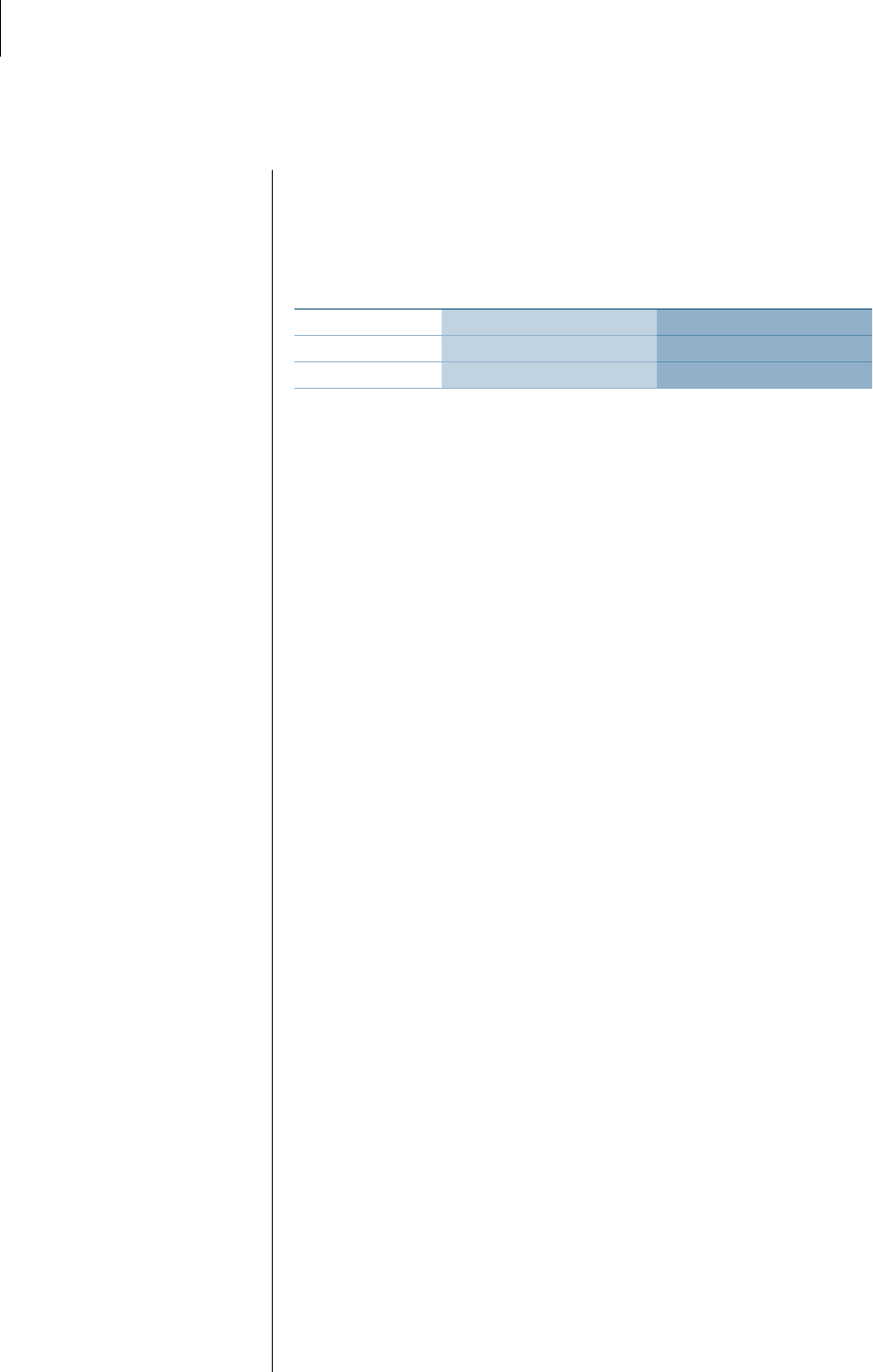
California State Auditor Report 2016-114
February 2017
36
Table 5
Students’ Abilities to Meet College Preparatory Coursework Requirements
May Be Negatively Affected if Districts MisidentifyCourses
UNIFIED SCHOOL DISTRICT
COURSES MISIDENTIFIED
AT SELECTED SCHOOLS
STUDENTS WHO MIGHT HAVE BEEN
AFFECTED BY MISIDENTIFIED COURSES
Coachella Valley 13 118
SanFrancisco 10 0
Stockton 60 53
Totals 83 171
Sources: California State Auditor’s analysis of data obtained from CoachellaValley, SanFrancisco,
and Stockton Unified School Districts’ master schedules, transcript data, and the University
ofCalifornia Course ManagementPortal.
Note: In Coachella and Stockton, these course misidentifications took place in 2011 through2015.
In SanFrancisco, the course misidentifications took place in 2013 through2015.
Table illustrates that Stockton’s and Coachella’s misidentified
courses from– through– resulted in at least
students who would have otherwise completed all college
preparatory coursework and may have been unable to meet UC
and CSU coursework admission requirements. Moreover, Stockton
provided a student handbook, which listed several courses as
certified when the UC had not actually certified them. is mistake
may have caused students who planned to attend a UC or CSU
school to select courses that would not have met the eligibility
requirements for these institutions. We do not know whether UC
or CSU would have actually denied admission to the students who
took these courses; nevertheless, the potential effect of these errors
on students serves to demonstrate the importance of a strong
centralizedprocess.
When asked for perspective about why these errors occurred,
Coachella’s director of secondary education noted that the district
was aware of the problems and that the majority of courses that
were listed incorrectly had been removed or were in the process of
being certified by the district. Stockton’s curriculum specialist, who
acts as the manager of college preparatory courses for the district,
provided twodifferent reasons for the errors, including a lack of
understanding of the UC’s update and submission process when
she initially took on the role in and the district’s process used
to update UC’s college preparatory database. Although all districts
misidentified some courses as certified, the number of misidentified
courses and the resulting number of affected students in Stockton
and Coachella demonstrate flawed district processes. If the districts
did not correct the processes, they run the risk that there are a far
greater number of misidentified courses affecting students at the
remaining high schools in thedistricts.
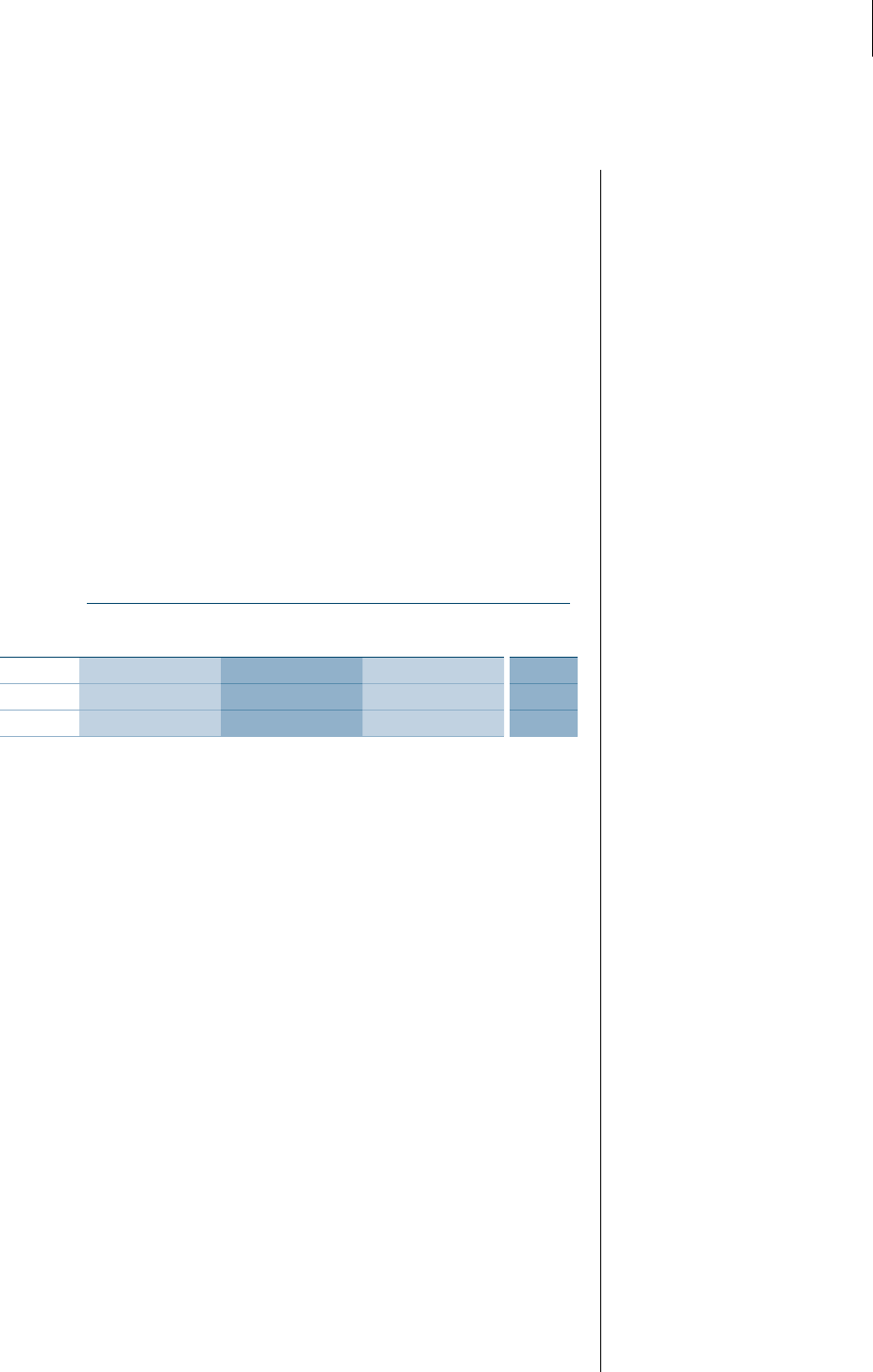
37California State Auditor Report 2016-114
February 2017
Some Charter High Schools Employ Best Practices to Improve College
Readiness That Other Districts and Schools in the State Could AlsoUse
e charter high schools we reviewed in the cities of Coachella,
Stockton, and SanFrancisco, respectively, reported college
preparatory completion rates that exceeded the results of the State, as
we show in Table. Although charter schools in general have varied
academic goals and missions, the three charter schools we selected
each focus on preparing students to excel in college. us, during our
audit period, they employed a variety of methods and practices to
support their students in completing college preparatorycoursework.
Table 6
Charter Schools Reported College Preparatory Completion Rates That
Exceeded the StateAverage
ACADEMIC
YEAR
COMPLETION RATE OF GRADUATING SENIORS
NOVA ACADEMY*
(COACHELLA)
GATEWAY CHARTER
HIGH SCHOOL
(SANFRANCISCO)
STOCKTON EARLY
COLLEGE ACADEMY
STATE
AVERAGE
2012–13
†
86%
†
39%
2013–14 55% 75 53% 42
2014–15 60 75 73 43
Sources: Unaudited data provided by Nova Academy, Gateway Charter High School, and Stockton
Early CollegeAcademy.
* Nova Academy is an independent charter school.
†
Nova Academy and Stockton Early College Academy did not have a graduating class of seniors
in2012–13.
For example, all three charter high schools we reviewed require
students to enroll in classes that stress skills needed to excel in
both high school and college. In particular, Gateway Charter
High School (Gateway) in the city of SanFrancisco makes use
of a programcalled College Counseling that educates students
about both four- and two-year colleges similar to another program
implemented throughout the district. As part of this program,
Gateway designed its curriculum to create a culture that encourages
students to attend college. Further, it takes its students to visit
colleges, and it assists them with applications, financial aid, and test
preparation for college admissions. Similarly, Nova Academy—an
independent charter school operating in the city of Coachella—
offers seminar courses that focus on the skills necessary for college
admission. ese seminars culminate with the students’ creating
senior portfolios. Stockton Early College Academy concentrates its
efforts on a high school success class that it provides to all incoming
gradenine students. In this course, students learn goal-setting,
the use of planners, study skills, and note-taking. All threecharter
schools reported that these courses are important parts of their
bestpractices.

California State Auditor Report 2016-114
February 2017
38
e threecharter high schools also use some other best practices.
For example, Gateway delivers targeted interventions by using a
process it calls Response to Intervention. is process implements
escalating levels of individual support to students who have
truancy problems or fail to meet grade expectations. e support
it provides to students who do not meet grade expectations varies
based on student needs, but it may include alternatives such as
tutoring, course-specific conferences, or referrals for assessments of
attention and learning difficulties. Similarly, Stockton Early College
Academy stated that it offers support through staff-supervised peer
tutoring fourdays a week in both math and science. is program
uses students as peer tutors, which bolsters support to students
who receive tutoring while providing experience to the peertutors.
Finally, Nova Academy offers several best practices, including a
Summer Advantage program that prepares its incoming gradenine
students by providing placement exams and activities related to
math and English. Students at Nova Academy are also evaluated
on a monthly basis for potential referral to an additional support
program called LINK, which includes after school tutoring
conducted twodays a week. e school evaluated students for
referral to LINK based on criteria including failure of any class or
missing assignments in one or more classes. All of the programs
noted in this section provide additional support to students and
may increase college preparatory completionrates.
Districts Risk Leaving Students Behind When They Align Their
Graduation Requirements With the College Preparatory Requirements,
But Do Not Provide AdditionalSupport
As we demonstrated in the previous sections, SanFrancisco’s
completion rates have risen in recent years not only because it
aligned its graduation requirements with the college preparatory
coursework the State’s public university systems require, but also
because it devoted significant resources to ensuring students
had the support necessary to complete that coursework. As
SanFrancisco’s efforts have shown, the alignment of graduation
requirements with college preparatory coursework requirements
coupled with the application of sufficient resources can yield
significant successes for California’s college-boundstudents.
SanFrancisco’s executive director of college and career readiness
stated that the district aligned its graduation requirements with
college preparatory coursework requirements in conjunction
withcarefully thought-out and adequately funded systems of support.
Beginning in fiscal year– and continuing through fiscal
year–, SanFrancisco dedicated .million to .million
from the Public Education Enrichment Fund (PEEF)—a local fund
Stockton Early College Academy’s
peer tutoring program uses
students as peer tutors, which
bolsters support to students who
receive tutoring while providing
experience to the peertutors.

39California State Auditor Report 2016-114
February 2017
that the city of SanFrancisco voters established in—specifically
toward college preparatory coursework support. It used these funds
to expand course options for off track students by adding evening and
after school courses and to support sixfull-time and onehalf-time
positions for data analysis, counseling, and districtwide coordination.
SanFrancisco increased its completion rate by percent in the
firstyear it devoted resources from the PEEF for college preparatory
coursework support. SanFrancisco plans to continue spending these
funds to support college preparatory coursework completion for the
foreseeablefuture.
In addition to SanFrancisco, a number of other school districts
throughout the State have also recently aligned their graduation
requirements with the college preparatory coursework requirements,
including both LosAngeles Unified School District (LosAngeles)
and SanDiego Unified School District. However, LosAngeles’ recent
efforts to transition to college preparatory requirements as a condition
of graduation demonstrates that unless the districts that make this
transition also dedicate sufficient resources to assist students with
the increased challenges these courses present, they may put many of
their students at risk not only of failing to meet college preparatory
requirements, but also of failing to graduate from highschool.
Specifically, Los Angeles aligned its graduation requirementswith
the college preparatory coursework requirements beginning withthe
class of. However, in the Board of Education of the city of
Los Angeles (board) projected that only percent of the classof
would meet the requirement and thus graduate from high school. In
response, the board renewed its commitment to college preparatory
coursework completion by passing a resolution to focus on supporting
those students most at risk of not successfully completing the
sequence of college preparatory courses by expanding course access
outside of the regular school day through summer school, community
college dual enrollment, and online courses. In addition, the board
directed LosAngeles’ Superintendent to eliminate the requirement
for a Cgrade or better in college preparatory courses as a condition of
graduation. LosAngeles also reported that it spent .million on an
immediate intervention plan to provide students withvarious credit
recovery options, tutorial services, tiered interventions, and training in
college preparatory courses for all itsteachers.
Recommendations
If the Legislature wishes to further prioritize students’ completion
of college preparatory coursework, it should help ensure gradenine
students are ready for the challenge of such work by devoting
additional resources or reallocating existing resources for educational
efforts beginning in kindergarten and continuing through gradeeight,
Unless the districts also dedicate
sufficient resources to assist students
with the increased challenges
these courses present, they may
put many of their students at
risk of failing to meet college
preparatoryrequirements.

California State Auditor Report 2016-114
February 2017
40
particularly to support math and English college readiness. Funding
mechanisms similar to the College Readiness Block Grant could help
better prepare kindergarten through gradeeight students for the
rigors of college preparatory coursework in highschool.
To ensure that districts throughout the State comply with existing
law, the Legislature should require districts to conduct analyses
to verify that all high school students receive acceptable levels
of access to the full range of college preparatory coursework. If
the Legislature decides to require these analyses, it should also
consider whether additional funding may be necessary to support
the districts’ associated administrative costs. If implemented, the
analyses should require the followingcomponents:
• Districts should report the results of their analyses toEducation.
• Education should issue an annual report to the Legislature
detailing all districts with high schools that have failed to
demonstrate sufficientaccess.
To increase students’ access to and completion rates of college
preparatory coursework, districts should take the followingactions:
• Develop and institute an on track/off track student identification
model similar to SanFrancisco’s model that will allow them to
determine whether students are completing grade-level college
preparatory coursework. e districts should notify parents
when they identify students as falling off track and should advise
the parents and students of available support and credit recovery
options. Furthermore, school staff should be required to meet
with and document the support they provide to thesestudents.
• Create a robust and stable network of credit recovery options
that reflect the needs of their student populations. ese
options—which the districts should monitor for effectiveness—
should include summer school courses and evening courses.
• Create and institute a centralized process for submitting,
managing, and tracking college preparatory courses and
certification requests. is process should maximize the number
of certified courses that the district offers. Further, to ensure that
students receive appropriate credit for their college preparatory
coursework, this process should match the UC’s course listings
with each school’s master schedule ofcourses.

41California State Auditor Report 2016-114
February 2017
Chapter 2
INCREASED STATE AND COUNTY‑LEVEL GUIDANCE
AND OVERSIGHT COULD IMPROVE STUDENTS’
COLLEGEPREPAREDNESS
Chapter Summary
Although the State has emphasized the importance of ensuring
that high school graduates meet the admission standards for its
public university systems, it has not established a clear statewide
framework to make certain that school districts (districts) provide
sufficient access to college preparatory coursework. Perhaps as a
consequence, each of the three districts we reviewed have adopted
different priorities and strategies related to college preparatory
coursework completion, as we discuss in Chapter. By increasing
the assistance they provide to districts, state and local entities
could better ensure students have sufficient access to college
preparatory coursework and consistent support to enable them
to successfully complete that coursework. For example, despite
the statutory responsibility that the state superintendent of public
instruction (superintendent) has to assist districts, the California
Department of Education (Education) did little to help them
during our three-year audit period. Further, county offices of
education (county offices) could provide additional oversight and
support to districts to ensure they offer sufficient access to college
preparatory coursework. Although other entities are also involved
in activities related to increasing college readiness, they have no
oversightresponsibilities.
In addition, local communities have little ability to assess districts’
success in preparing students for admission to the State’s public
university systems because districts’ current method for reporting
their outcomes related to college preparatory coursework activities
is inadequate. State law requires districts to include specific metrics
in their local control and accountability plans (accountability
plans), such as college preparatory coursework completion rates
(completion rates), to measure student achievement. However,
the accountability plans for the three districts we reviewed were
inaccurate, uninformative, and did not aid in our understanding of
whether the districts met their goals of improved college readiness.
Further, the districts reported outdated completion rates that did
not measure the effectiveness of their recent actions, making it
difficult to determine whether the actions they took in any given
year had a direct effect upon their completionrates.

California State Auditor Report 2016-114
February 2017
42
Education and County Offices Have Provided Little Oversight Related
to College PreparatoryCoursework
Under current law, no single state or local entity is specifically
responsible for overseeing whether districts provide sufficient access
to college preparatory coursework and adequately assist their students
in completing that coursework. Many entities play a role in college
preparatory coursework and accountability plans. However, of these
entities, Education and county offices are best positioned to provide
guidance and oversight to districts to improve college readiness—we
recommend specific additional responsibilities for these entities in
Figure . As of December, neither of these entities had verified
that high schools throughout the State provide students with sufficient
access to college preparatory coursework. e lack of such an analysis
demonstrates the need for additional oversight. Although entities
such as the State Board of Education (State Board), the California
Collaborative for Educational Excellence (Educational Collaborative),
and the University of California (UC) play important roles in college
preparedness, they have no oversightresponsibilities.
Education Provides Minimal Assistance to Districts to Ensure That
Students Have Access to College Preparatory Coursework
State law places few specific requirements on Education related to
college preparatory coursework. For example, state law requires
the superintendent, who heads Education, to assist districts in
ensuringthat all public high school students have access to a core
curriculum that meets the admission requirements of UC and
the California State University. In addition, state law requires the
superintendent to advise districts that maintain high schools about
the importance of making readily available to each high school
student the current list of courses offered by the student’s high
schoolthat are certified by UC as meeting admissionsrequirements.
Although Education asserts it has partnered with and supports a
number of organizations that promote college readiness, it could
only provide oneinstance in the threeyears from through
in which it or the superintendent provided guidance or assistance
to districts regarding college preparatory coursework. Specifically,
in September, after we began our audit, Education distributed
a letter to county offices, school districts, charter schools, and
high school principals to provide information and resources about
Advanced Placement (AP) and other rigorous course options. Attached
to the letter was a three-page list that included websites offering
information about these course options. Education’s letter specified
that it provided these resources only as a convenience, and that their
inclusion did not imply its endorsement. Among these websites, the
letter referred districts to the UC’s college preparatory coursewebsite.
State law places few specific
requirements on Education related
to college preparatorycoursework.
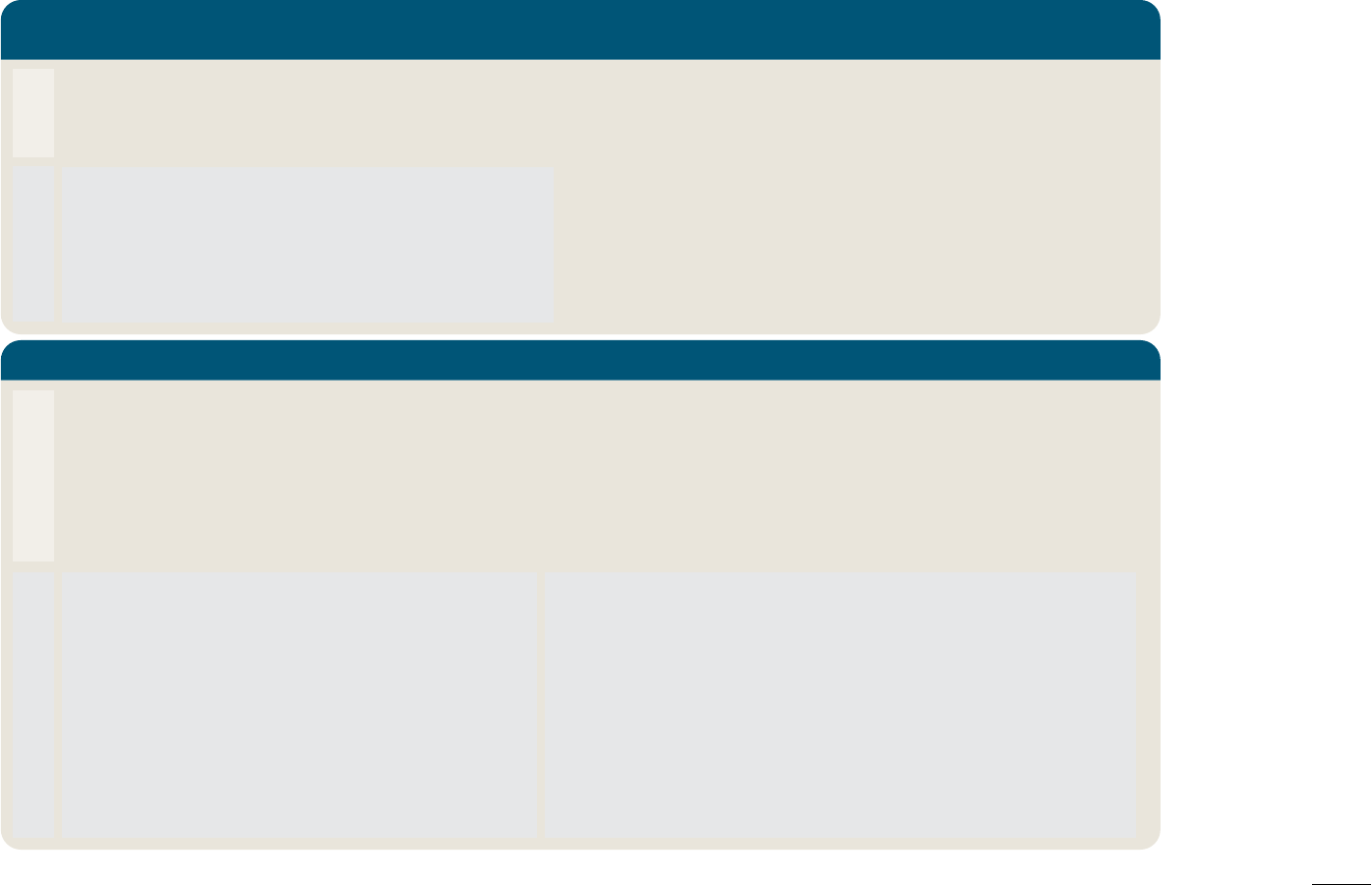
43California State Auditor Report 2016-114
February 2017
Figure 13
Recommendations for Improving State and Local Responsibilities Related to College Preparatory Coursework
STATE
California State Auditor’s
Recommendations
Current
LOCAL
STATE BOARD OF EDUCATION
(STATE BOARD)
COUNTY OFFICES OF EDUCATION SCHOOL DISTRICTS
UNIVERSITY OF CALIFORNIA
(UC)
• Decides the coursework that applicants
need for admission.
• Reviews and approves college preparatory
coursework submitted by schools.
• Maintains a list of approved courses for
each high school on its website.
• Policy-making body for Education.
• Adopts evaluation rubrics to
measure district performance.
CALIFORNIA DEPARTMENT OF EDUCATION
(EDUCATION)
• Administers state and federal education programs.
• Disseminates information.
• Collects data from the districts.
• Publishes ocial data.
• Would provide training and guidance to districts on the creation and
application of appropriate district- and school-level access analyses.
• Would issue an annual report to the Legislature detailing all districts
with high schools that have failed to demonstrate sucient access.
• Education (or other state-level entity) would coordinate statewide
college readiness eorts to increase college preparatory completion
rates throughout the State.
California State Auditor’s
Recommendations
Current
• Oers assistance to districts through ad hoc contracts.
• Approves local control and accountability plans
(accountability plans).
• Would monitor districts to determine whether they oer students
adequate access to college preparatory courses.
• Would review districts' accountability plans and monitor the
actions the districts take to implement the goals in those plans.
• Would determine if all its high school students receive acceptable levels of access to
the full range of college preparatory courses and submit that data to Education and
its respective county oce of education.
• Would have an on track/o track model that allows it to determine whether students
are completing grade-level appropriate college preparatory coursework. It would
notify parents when it identies students as falling o track and advise parents and
students of available credit recovery and support options available. School sta
would meet with these students and document the support they provide to students.
• Would have a robust and stable network of credit recovery options, monitor their
eectiveness, and provide appropriate support oerings.
• Would have a centralized process for submitting, managing, and tracking college
preparatory courses and certication requests.
• Establishes graduation requirements above the state minimum.
• Self-reports student data.
• Submits college preparatory courses to the UC for approval.
• Adopts accountability plan annually.
• Oers to all otherwise qualied students a course of study fullling the requirements
for admission to UC and the California State University and provides a timely
opportunity to each of those students to enroll within a four-year period in each
course necessary to fulll those requirements prior to graduation from high school.
Sources: State law and information available from Education, State Board, UC, county offices of education, and schooldistricts.

California State Auditor Report 2016-114
February 2017
44
We do not believe that oneletter about AP courses with an attached
list of web addresses constitutes adequate assistance to districts to
ensure they provide sufficient access to college preparatory courses,
especially given that—as we discuss in Chapter—each of the
threedistricts we reviewed lacked data and processes to ensure they
offered enough college preparatory courses. For Education to fulfill its
statutory responsibility to assist districts, we believe it should develop
recommended methods that districts could use to track the college
preparatory courses they offer and to ensure they offer enough of
these courses. ese methods and processes could mirror those that
we used when analyzing access at the threedistricts wereviewed.
According to Education’s administrator of the college preparation
and postsecondary programs office (administrator), Educationdoes
not offer formal assistance to districts related to access to college
preparatory coursework; instead, it directs the districts to UC. e
administrator stated that Education could have a role in assessing
the sufficiency of the access that districts provide; however, he
explained that Education currently has no guidelines and no
resources associated with this issue. Education is aware of some
high schools that offer limited rigorous courses. For instance, in the
September letter that the superintendent sent to the districts,
Education recognized that percent of high schools (of,)
offered AP courses in fewer than fivesubjects in–. However,
the administrator believes that the state law is not clear about
Education’s role in addressing this problem, in part because state law
does not specify what the word assist means orentails.
Nonetheless, we expect Education—charged with oversight
responsibility for California’s kindergarten through grade public
education—to have the expertise necessary to define what assisting
districts means. Although the districts are ultimately responsible
for ensuring they provide sufficient access for all their students,
Education should—as state law requires—assist them in meeting
thisresponsibility.
Although County Offices Are Not Specifically Responsible for Overseeing
Access to College Preparatory Coursework, They Could Fulfill This
OversightFunction
Although school districts, rather than county offices, are required
by state law to ensure students’ access to college preparatory
coursework, county offices are positioned well to assist with
this responsibility because of the oversight functions they
already perform. For example, state law requires county office
superintendents to examine and approve district budgets. In
addition, under state law, county offices are responsible for
monitoring districts for sufficient textbooks, the condition of their
Although the districts are responsible
for ensuring they provide sufficient
access for all their students,
Education should assist them in
meeting thisresponsibility.

45California State Auditor Report 2016-114
February 2017
facilities, and their teacher misassignments and vacancies. Further,
county offices can help districts formulate new curricula and enter
into agreements with them to provide trainingprograms.
e county offices we spoke to seem willing to assume additional
responsibilities related to overseeing course access. In fact, as we
discuss in Chapter, onecounty office already provides services
related to college preparatory coursework completion through
contracts it entered into with an individual district. Specifically,
Coachella Valley Unified School District (Coachella) entered into
a contract with Riverside County Office of Education (Riverside
County) to provide training to district and school personnel on
implementing a systematic approach to college preparatory course
management and transcript evaluation. e executive director
of instructional services for Riverside County stated that county
offices statewide could assist districts by advising them on how to
verify the sufficiency of their college preparatory courses. Further,
the assistant superintendent of educational services from the
SanJoaquin County Office of Education, of which Stockton Unified
School District (Stockton) is a part, stated that county offices
could offer in-person visits to verify sufficient access to college
preparatorycoursework.
However, to provide specialized oversight and guidance to districts,
county offices would need to obtain not just the legal ability to
oversee districts but also the funding necessary to support these
efforts. For example, Riverside County is currently able to provide
services to Coachella only because of the funding it receives from
the district as a result of the contract. Similarly, the assistant
superintendent of educational services from the SanJoaquin County
Office of Education stated that if funding existed to support these
efforts, county offices could offer help to districts regarding college
preparatory coursework through in-person visits to verify access to
thosecourses.
State Law Does Not Require the State Board or the Educational
Collaborative to Assess Whether Districts Give Students the Opportunity
to Enroll in College PreparatoryCourses
Although state law assigns the State Board the responsibility
to adopt rules and regulations to govern kindergarten through
grade schools, it does not clearly assign it direct responsibility
regarding college preparatory coursework. e State Board
is responsible for approving academic content standards, for
adopting statewide assessments and curriculum frameworks, and
for establishing rules and regulations for the allocation of federal
funds to districts. However, according to the State Board’s chief
counsel, the State Board has no role related to the provision of
The county offices we spoke to
seem willing to assume additional
responsibilities related to
overseeing courseaccess.

California State Auditor Report 2016-114
February 2017
46
college preparatory coursework nor is it responsible for providing
direct assistance to districts to ensure students have access to
college preparatory courses. us, the State Board would not be in a
position to provide districts with specific guidance on standards or
mechanisms to ensure that students have sufficient access to college
preparatorycoursework.
e Educational Collaborative is a public agency the Legislature
created in conjunction with its adoption of the local control funding
formula (funding formula) in. e Educational Collaborative’s
purpose is to advise and assist districts, county superintendents of
schools, and charter schools in achieving the goals they establish
in their accountability plans. According to the Educational
Collaborative’s director of training and outreach, the agency is in the
pilot stage and thus had not fully implemented services statewide
as of December. He stated that the Educational Collaborative
has not established a particular date by which the pilot stage will end
and that it could continue until–. e director of trainingand
outreach asserted that the Educational Collaborative could
participate in the districts’ college readiness efforts by providing
trainings and surveys during annual workshops and by creating
professional learning community networks in which districts could
obtain peer-to-peer help. However, he also explained that he is not
aware of district demand for assistance related to college preparatory
coursework issues or collegereadiness.
UC Has Substantially Increased the Rate at Which It Approves Courses
As discussed in the Introduction, UC is responsible for certifying
courses as college preparatory. In the fouryears from–
through–, UC has improved its process of approving
college preparatory courses and has increased the percentage of
new courses it approved from percent in– to percent
in–. During that same period, UC also substantially lowered
the average time it took to issue certification decisions from
days to days. In addition, in UC changed the format
forcourse submissions and, according to UC’s associate directorfor
undergraduate admissions, the new format reduced the length
of most course proposals it receives from to pages to about
fivepages. We asked districts whether they had any trouble
getting courses approved: ninedistricts reported no problems
and twoexperienced minor issues that were not related to UC’s
performance in approvingcourses.
UC also provided outreach to districts and schools during–
through–. State law requests, but does not require, UC to
assist each district that maintains a high school in order to ensure
that school administrators and educators understand how to
Nine districts reported no problem
in getting courses approved and
twoexperienced minor issues
that were not related to UC’s
performance in approvingcourses.

47California State Auditor Report 2016-114
February 2017
submit courses for approval, have processes for developing and
submitting courses, and maintain accurate lists of courses. To
meet that request, UC maintains a website that provides guidance
on submitting courses for approval and annually updating course
lists. Further, to help districts keep accurate course lists across
their multiple high schools, the associate director of undergraduate
admissions indicates that UC will further enhance its web portal
in February, allowing districts to consolidate courses taught
at different high schools into oneversion of that course. UC also
holds a variety of events each year that provide guidance on college
preparatory coursework requirements and the course submission
process. e associate director of undergraduate admissions
confirmed that UC will continue to offer this guidance in thefuture.
The Accountability Plans Make It Difficult for Communities to Assess
Districts’ Progress Toward Improved CollegePreparedness
When it adopted the new funding formula in, the
State created a process for monitoring the performance
of local educational agencies, including districts,
through twokey oversight elements. e firstelement
is the three-year accountability plans that districts
must complete and update annually. In addition to
objectives and strategies, the accountability plans
must list specific actions the districts intend to take to
achieve those objectives. Further, state law requires the
districts’ accountability plans to use certain metrics—
such as college preparatory completion rates—to
measure the students’ achievements. Asthe textbox
describes, county offices must approve thedistricts’
accountability plan. e secondoversight element
state law requires is an evaluation tool that the State
Board approved in that will assist districts in
evaluating their strengths, weaknesses, and areas that
require improvement. e evaluation tool will also
help identify districts in need of technical assistance
orintervention.
e college readiness portions of the accountability plans for the
threedistricts we reviewed were inaccurate and uninformative.
Further, the three accountability plans were not useful in
determining whether the districts had increased students’
completion rates or whether the steps they had taken to improve
college readiness had positiveeffects.
The accountability plan process requires each
school district to do the following:
• Consult with teachers, parents, students, and
otherstakeholders.
• Develop and adopt the accountability plan.
• File the plan with their respective county superintendents
for approval.
• Update the plan each year, which includes reviewing
the progress toward meeting its goals and assessingthe
effectiveness of the specific actions used to achieve
thosegoals.
Source: California State Auditor’s review of information
obtained from state law.

California State Auditor Report 2016-114
February 2017
48
The Accountability Plans We Reviewed Contained Numerous Errors and
Could Not Be Used to Assess CompletionRates
When reviewing accountability plans, we found that districts reported
incorrect data or data that were not useful in determining whether
the districts met their completion rate goals. For example, Stockton
reported a completion rate of .percent in its –accountability
plan—a percent drop from its – baseline. However, Stockton
acknowledged to us that this completion rate was incorrect and
was the result of an internal data processing error; in fact, its actual
completion rate was closer to percent. Moreover, Stockton
included conflicting information in threedifferent sections of its
–accountability plan update: its metric results showed that it
was not meeting its targeted completion rate of .percent; it stated
elsewhere in the plan that it had successfully met its goal of ensuring
that every student would graduate ready for college or a career; and
it stated in yet another section of the plan that it was too early to
determine if its actions related to college preparatory coursework
had been effective. Stockton also admitted in the same document
that its accountability plan included circular references and included
extremely vague descriptions of its plannedactions.
e accountability plans for the other two districts also were
inaccurate and vague, making it difficult for a reader to determine
what, if any, progress they had made in increasing students’
completion rates. Coachella reported a completion rate of
.percent—.percent less than its goal—yet also reported
that it met or exceeded its planned outcome. In SanFrancisco
Unified School District’s – accountability plan, it stated
that it planned to increase its previous year’s completion rate by
percent, but it did not include the previous year’s completion
rate in the accountability plan. Coachella and SanFrancisco had
various perspectives regarding the issues we identified with the
accountability plans, including difficulty in identifying which
resources the district used on specific actions and problems with
establishing realistic targets and metrics. Because of staff turnover,
Stockton did not know the basis for staff decisions related to
accountabilityplans.
In many instances, we could not find a clear link between the
college readiness goals Stockton and Coachella articulated in
their accountability plans and the actions included in the plans
they intended to take to achieve those goals. State law requires
districts to describe in their accountability plans the specific actions
they will perform during each year to achieve their stated goals.
However, many of the actions and services Stockton attached to
its college and career readiness goal in its – accountability
plan did not directly relate to either college or career readiness.
ese actions included increasing anti-bullying efforts and adding
The accountability plans we
reviewed were inaccurate and
vague, making it difficult for
a reader to determine what, if
any, progress the districts had
made in increasing students’
completionrates.

49California State Auditor Report 2016-114
February 2017
district behavioral support staff. Moreover, combining college
readiness goals with other goals makes it difficult to assess what
activities will implement each element of the goal. For example,
in its –accountability plan, Coachella stated that its goal
was to “increase student achievement and other pupil outcomes
to prepare all students for college, career, and citizenship in
the
st
century.” Oneof the related activities was purchasing
equipment for its kindergarten through gradeeight physical
education program. When districts use overly broad goals or
include activities unrelated or only marginally related to their
goals, they impede the ability of stakeholders to determine which
actions affect their completionrates.
County offices could provide districts with additional guidance
and oversight to make their districts’ accountability plans more
effective, but a statutory change might be necessary to give
thecounty offices increased authority. State law currently requires
county offices to ensure that the districts’ accountability plans
adhere to the template, that their budgets include sufficient funds
to implement the actions and strategies in their plans, and that
the plans identifythe expenditures for unduplicated students—
English learners, students who are classified as eligible for free
or reduced price meals, or students in foster care. However, state
law does not require county offices to evaluate the content of
districts’ accountability plans to ensure they are accurate or useful,
nor does it require the districtsto implement county offices’
suggestedchanges.
One county office we visited has taken an active role in
assistingoneof its districts in completing the accountability
plan template and reviewing the content of its plan. Specifically,
Riverside County performed a comprehensive assessment of
Coachella’s – and – accountability plans and made
suggestions for improvement. For example, Riverside County
recommended Coachella consider including completion rate
targets for unduplicated students and include appropriate actions
to close those achievement gaps. In its –accountability
plan, Coachella implemented the recommendation and included
separate targets and actions for unduplicatedstudents.
Conversely, the assistant superintendent of educational services
of the SanJoaquin County Office of Education explained that
the county office helps districts focus on the eightstate priorities
outlined in state law but does not assist in setting districts’ goals,
creating any other content related to the accountability plan, or
overseeing the quality of the district’s accountabilityplans.
One county office we visited has
taken an active role in assisting
oneof its districts in completing the
accountability plan template and
reviewing the content of itsplan.

California State Auditor Report 2016-114
February 2017
50
The Districts We Reviewed Reported Outdated Completion Rates That
Did Not Measure the Effectiveness of Their Actions
e districts we reviewed reported completion rates in their
accountability plans that were from prior years and thus did
not correspond with the activities and services the districts had
implemented to improve students’ college preparedness. For example,
the threedistricts we reviewed developed their –accountability
plans using either – or –completion rates or did not
include a baseline year. In the updates to the –plans, they
reported –completion rates when attempting to measure
whether they had met the stated goals of their –accountability
plans. However, because the activities the districts reported performing
in the –accountability plan took place after–, we cannot
attribute those activities performed to an increase or decrease in their
completion rates. To gauge the effectiveness of activities meant to
increase college preparedness, districts should use the outcome data
that corresponds with the time the activities tookplace.
e districts use prior years’ data because Education provides the
districts with the annual college preparatory completion data nearly
a year after the end of the school year. Each year, districts submit
data between October and December, including college preparatory
completion data from the prior school year. e administrator
of Education’s data reporting office stated that Education begins
compiling the data in lateJanuary or earlyFebruary and that the
process typically takes a minimum of twoto threemonths. Further,
the timing is highly dependent on other competing priorities.
Education typically publishes the information for use by the districts
in April. State law requires the districts to issue their accountability
plans to county offices for approval no later than July, which
means that districts have a maximum of twomonths to amend their
plans with the new information and submit the revised documents
to stakeholders. For instance, Coachella’s director of state and
federal projects said that Coachella’s district board approved the
accountability plan in June and sent it for approval to the county
office in July. Further emphasizing the districts’ time constraints,
SanFrancisco’s executive director of budget services asserted that
stakeholder engagement begins earlier and earlier each year. us,
districts are using outdated completion rates because of the short
window between when Education issues graduation data and the
districts’ boards adopt their accountabilityplans.
e State Board has revised the – accountability plan template,
which will partially alleviate the difficulty of evaluating the effectiveness
of the district’s actions. e State Board modified the accountability
plan template to include the goals, activities, and outcomes that
span a three-year window. e modified template will partially
Districts are using outdated
completion rates because of the
short window between when
Education issues graduation data
and the districts’ boards adopt their
accountability plans.

51California State Auditor Report 2016-114
February 2017
address the issue of outdated metrics by including at least oneyear of
completion rates that pertain to the actions taken in the corresponding
timeperiod.
Recommendations
To increase college preparatory completion rates, the Legislature
should require Education or another state entity to coordinate
statewide college readiness efforts focusing on increasing college
preparatory completionrates.
To comply with existing law and ensure that students receive
sufficient access to college preparatory coursework, Education
should provide training and guidance to districts throughout the
State on the creation and application of appropriate district- and
school-level accessanalyses.
To ensure that high school graduates are eligible for admission to
the State’s public university systems, the Legislature should require
county offices to monitor districts to determine whether they offer
students adequate access to college preparatorycoursework.
To ensure districts’ accountability plans are accurate and informative,
the Legislature should require county offices to review districts’
accountability plans and monitor the actions the districts take to
implement the goals in thoseplans.

52 California State Auditor Report 2016-114
February 2017
We conducted this audit under the authority vested in the California State Auditor by Section
etseq. of the California Government Code and according to generally accepted government auditing
standards. ose standards require that we plan and perform the audit to obtain sufficient, appropriate
evidence to provide a reasonable basis for our findings and conclusions based on our audit objectives
specified in the Scope and Methodology section of the report. We believe that the evidence obtained
provides a reasonable basis for our findings and conclusions based on our auditobjectives.
Respectfully submitted,
ELAINE M. HOWLE, CPA
State Auditor
Date: February ,
Staff: Kathleen Klein Fullerton, MPA, Audit Principal
Aaron E. Fellner, MPP
Nicholas B. Phelps, JD
Inna A. Prigodin, CFE
Cecilia White, MPPA
IT Audits: Michelle J. Baur, CISA, Audit Principal
Ben Ward, CISA, ACDA
Sarah Rachael Black, MBA, CISA
Ryan P. Coe, MBA, CISA
Grant Volk, MA, CFE
Legal Counsel: J. Christopher Dawson, Sr. Staff Counsel
For questions regarding the contents of this report, please contact
Margarita Fernández, Chief of Public Affairs, at ...

53California State Auditor Report 2016-114
February 2017
Appendix A
OUR ANALYSIS OF STUDENT ACCESS TO COLLEGE
PREPARATORYCOURSEWORK
Table A, beginning on the following page, summarizes the results
of our analysis of college preparatory coursework access. We
reviewed schedules of courses offered at two high schools in each
of the threeschool districts we visited and compared the courses
offered to the schools’ enrollments. Although there were significant
limitations to the data, when such data was available, our analysis
suggests that the schools provided students with sufficient access
to college preparatory coursework. Each school we reviewed did
not meet the minimum access requirements in every category for
every year; however, the deficiencies we noted were unlikely to
have affected students’ opportunities to complete all of the college
preparatory courseworkrequirements.
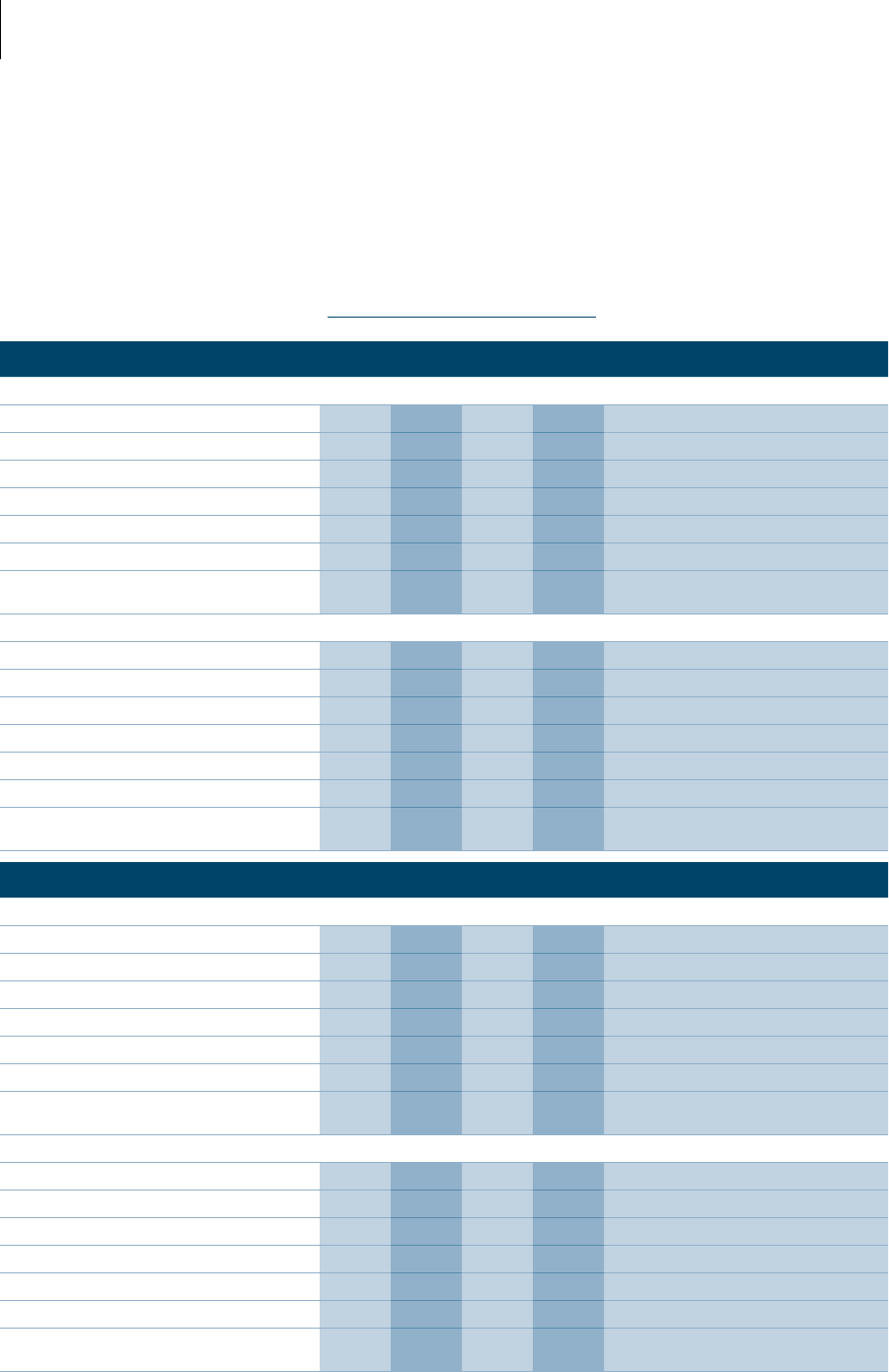
54 California State Auditor Report 2016-114
February 2017
Table A
Access to College Preparatory Coursework at the Six High Schools WeReviewed
HIGH SCHOOL /
COLLEGE PREPARATORY COURSEWORK REQUIREMENTS
PERCENTAGE OF STUDENTS WHO HAD
COLLEGE PREPARATORY COURSEWORK ACCESS
PER ACADEMIC YEAR
TARGET ACCESS PERCENTAGE
NECESSARY FOR STUDENTS TO
MEET REQUIREMENT OVER A FOUR‑YEAR PERIOD2011–12 2012–13 2013–14 2014–15
Coachella Valley Unified School District
Coachella Valley High School Based on trimester schedule
(a) History—2 years 73% * * * 50%
(b) English—4 years 169 * * * 100
(c) Mathematics—3 years 109 * * * 75
(d) Laboratory Science—2 years 62 * * * 50
(e) Foreign Language—2 years 37
†
* * * 50
(f) Visual and Performing Arts—1 year 36 * * * 25
(g) College Preparatory Elective—1 year 32 * * *
25
or excess capacity in other subcategory
Desert Mirage High School Based on semester schedule
(a) History—2 years * * * 54% 50%
(b) English—4 years * * * 119 100
(c) Mathematics—3 years * * * 92 75
(d) Laboratory Science—2 years * * * 48
‡
50
(e) Foreign Language—2 years * * * 33
†
50
(f) Visual and Performing Arts—1 year * * * 40 25
(g) College Preparatory Elective—1 year * * * 8
§
25
or excess capacity in other subcategory
SanFrancisco Unified School District
Mission High School Based on semester schedule
(a) History—2 years
^ ^
80% 95% 50%
(b) English—4 years
^ ^
125 147 100
(c) Mathematics—3 years
^ ^
116 130 75
(d) Laboratory Science—2 years
^ ^
109 109 50
(e) Foreign Language—2 years
^ ^
56 58 50
(f) Visual and Performing Arts—1 year
^ ^
50 59 25
(g) College Preparatory Elective—1 year
^ ^
16
§
36
25
or excess capacity in other subcategory
Washington High School Based on semester schedule
(a) History—2 years
^ ^
83% 61% 50%
(b) English—4 years
^ ^
128 113 100
(c) Mathematics—3 years
^ ^
119 122 75
(d) Laboratory Science—2 years
^ ^
107 108 50
(e) Foreign Language—2 years
^ ^
70 71 50
(f) Visual and Performing Arts—1 year
^ ^
51 53 25
(g) College Preparatory Elective—1 year
^ ^
23
§
27
25
or excess capacity in other subcategory
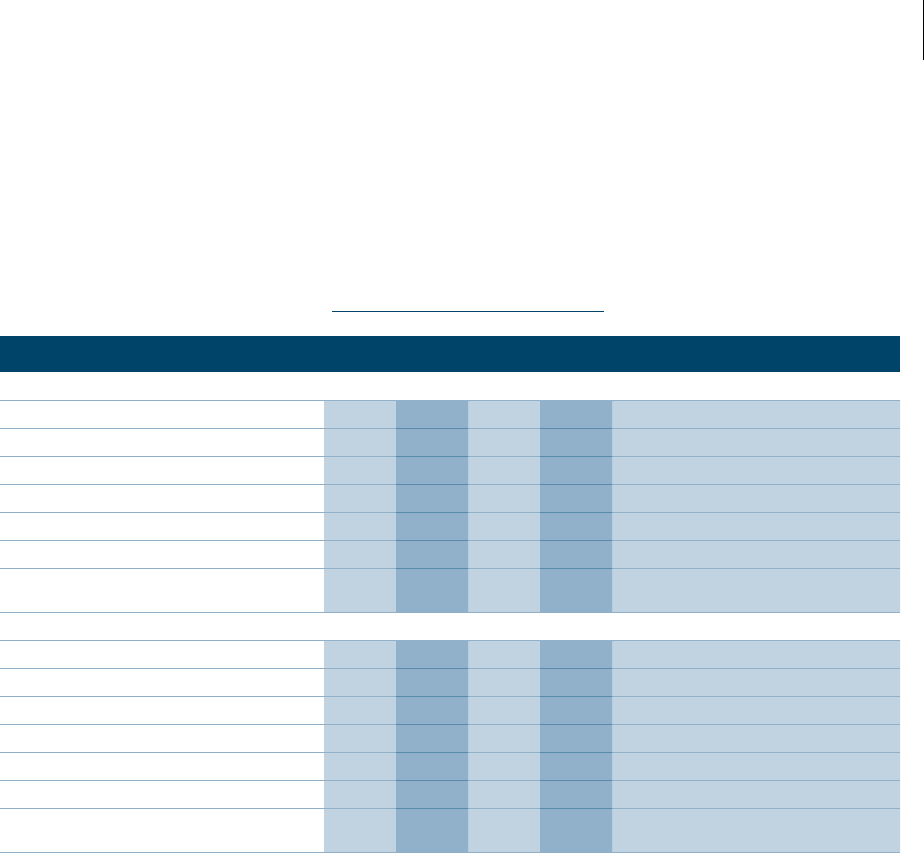
55California State Auditor Report 2016-114
February 2017
HIGH SCHOOL /
COLLEGE PREPARATORY COURSEWORK REQUIREMENTS
PERCENTAGE OF STUDENTS WHO HAD
COLLEGE PREPARATORY COURSEWORK ACCESS
PER ACADEMIC YEAR
TARGET ACCESS PERCENTAGE
NECESSARY FOR STUDENTS TO
MEET REQUIREMENT OVER A FOUR‑YEAR PERIOD2011–12 2012–13 2013–14 2014–15
Stockton Unified School District
Edison High School Based on block schedule
(a) History—2 years 75% 80% 68% 67% 25%
(b) English—4 years 110 111 111 102 50
(c) Mathematics—3 years 101 97 92 90 37.5
(d) Laboratory Science—2 years 48 72 60 57 25
(e) Foreign Language—2 years 64 57 56 63 25
(f) Visual and Performing Arts—1 year 54 52 54 51 12.5
(g) College Preparatory Elective—1 year 25 31 23 5
§
12.5
or excess capacity in other subcategory
Franklin High School Based on semester schedule
(a) History—2 years 68% 66% 79% 57% 50%
(b) English—4 years 100 94
#
101 92** 100
(c) Mathematics—3 years 86 85 98 94 75
(d) Laboratory Science—2 years 52 60 64 65 50
(e) Foreign Language—2 years 48
††
45
††
47
††
56 50
(f) Visual and Performing Arts—1 year 42 39 33 30 25
(g) College Preparatory Elective—1 year 18
§
12
§
35 18
§
25
or excess capacity in other subcategory
Source: California State Auditor’s analysis of course schedule and enrollment data from Coachella Valley, SanFrancisco, and Stockton Unified
SchoolDistricts.
Note: Target percentages vary based on school schedule type. For example, the (a) category requires twoyears of various combinations of history
courses. For a school based on a semester schedule to provide 100percent access in the (a) category, it would need to ensure that adequate seats
existed for 50percent of the students to take an (a) course in any given year. This would allow half the students to complete 10credits in a given
year, thereby allowing the potential for all students to satisfy the 20-credit or two-year requirement within fouryears. However, other schedule
types, such as Edison High School’s four-period block schedule, allowed students to take 10credits in a given course in the span of time it would
usually take a student to receive fivecredits in a traditional semester schedule. This ability to take more credits across fewer periods changes the
yearly targetpercentage.
* We did not conduct an analysis related to Coachella Valley High School in 2012 through 2015 and Desert Mirage High School in 2011 through2014
due to district business practices, which resulted in courses being labeled as inactive. These business practices prevented us from determining
whether courses listed in the district’s database reflected courses that were actually taught or merely courses that were planned but nottaught.
†
Although Coachella Valley High School and Desert Mirage High School are below the target percentage in their respective foreign language levels,
the enrolled population is primarily composed of native Spanish speakers who would likely qualify to take higher-level foreign language courses.
UC and CSU policy allows for validations based on higher-level foreign language courses, thus satisfying therequirement.
‡
Although laboratory science is deficient by 2percent, the effect would be limited to a potential of approximately 40students and could have
been resolved by excess capacity in other years.
§
A lack of capacity in the (g) category can be made up by using excess capacity in any other subcategory. Sufficient additional capacity existed
within other college preparatorysubcategories.
^
We did not conduct an analysis for SanFrancisco Unified School District related to 2011–12 and 2012–13 due to data limitations that prevented
us from determining course length and maximumcredits.
#
Franklin High School had sufficient capacity in college preparatory English when we adjusted for students enrolled in English resourcecourses.
** Although Franklin High School appears deficient in 2014–15, students were actually enrolled in grade-level appropriate courses that provided
access, although this action required the school to enroll students past the maximum capacity of the individualsections.
††
In 2011–12, 2012–13, and 2013–14, this potential deficiency was caused by uncertified courses misidentified by the district as certified by UC.
The UC and CSU allow higher-level foreign language courses to validate lower-level requirements. Higher-level foreign language courses in the
prior year would have satisfied the access requirement for students enrolled in the affectedclasses.

56 California State Auditor Report 2016-114
February 2017
Blank page inserted for reproduction purposes only.

57California State Auditor Report 2016-114
February 2017
Appendix B
STUDENT DEMOGRAPHICS OF THREESELECTEDDISTRICTS
AND COMPLETION RATES BY ENGLISH LEARNER STATUS
We were asked to provide the number of students enrolled by race
for each of the three districts we selected for review and the average
completion rate by English learner status, among other things.
TableB. on the following page summarizes student demographics
in our threeselected districts from our threecohorts in graduation
years through. As we indicated in Chapter, Chicano/Latino
students averaged percent of the student population in Coachella
Valley Unified SchoolDistrict.
Table B. on page summarizes completion rates by English
learner status in our threeselected districts from our threecohorts
that completed high school from through. is analysis
shows, for example, that the percentage of English learners in
Stockton Unified School District who completed college preparatory
coursework ranged from percent to percent.
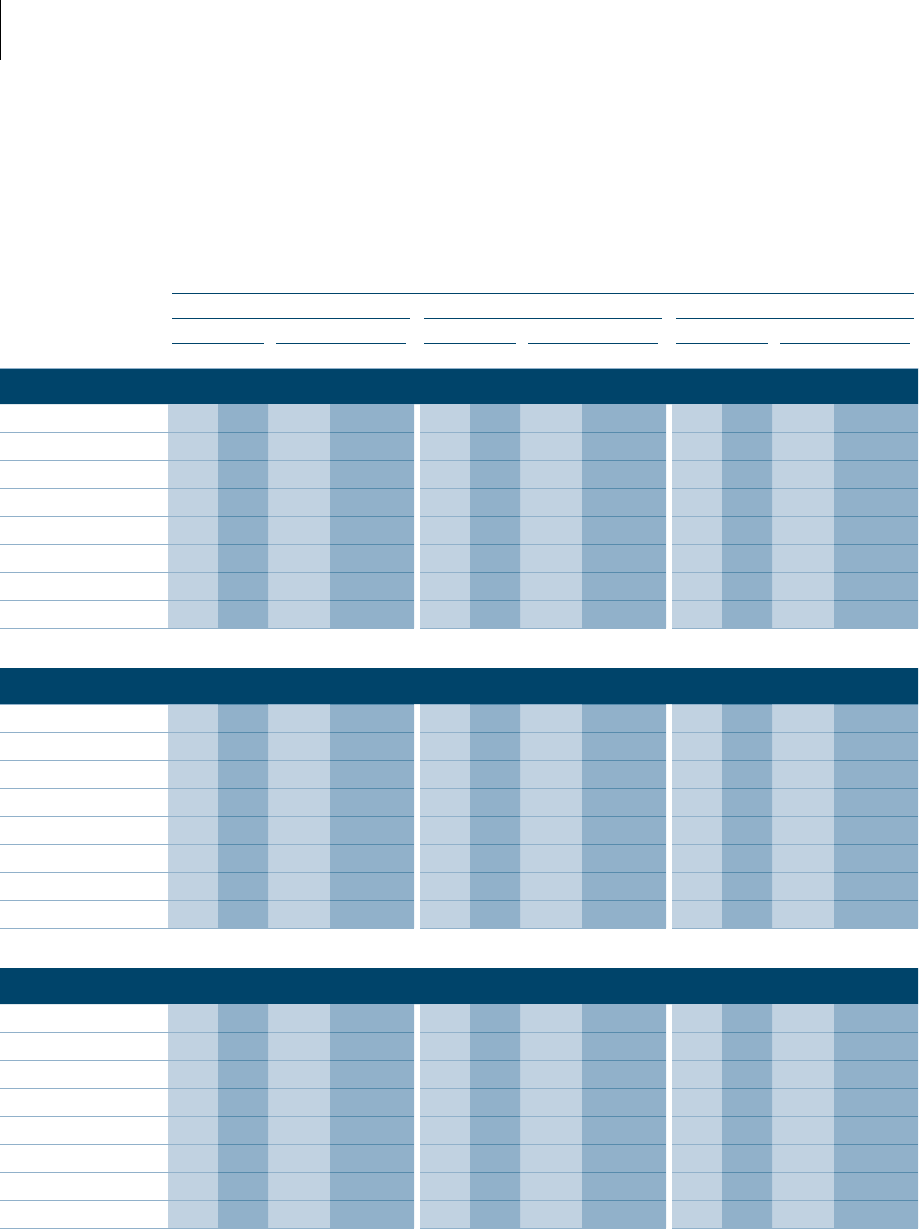
58 California State Auditor Report 2016-114
February 2017
Table B.1
Enrollment in Cohorts for Graduation Years 2013 Through 2015
STUDENT ENROLLMENT BY GRADUATION YEAR
2013 2014 2015
GENDER TOTALS GENDER TOTALS GENDER TOTALS
ETHNICITY/RACE FEMALE MALE NUMBER PERCENTAGE FEMALE MALE NUMBER PERCENTAGE FEMALE MALE NUMBER PERCENTAGE
Coachella Valley Unified School District
American Indian * * * * * * * * * * * *
Asian * * * * * * * * * * * *
Black/African American * * * * * * * * * * * *
Chicano/Latino 593 652 1,245 96% 605 649 1,254 97% 540 663 1,203 97%
Not specified * * * * * * * * * * * *
Pacific Islander 0 0 0 0 0 0 0 0 0 0 0 0
Two or more races * * * * * * * * * * * *
White 19 16 35 3 * * * * * * * *
Totals * * * 100% * * * 100% * * * 100%
SanFrancisco Unified School District
American Indian * * * * * * * * * * * *
Asian 1,016 1,046 2,062 54 1,061 1,138 2,199 58 973 1,108 2,081 56
Black/African American 196 193 389 10 169 170 339 9 151 165 316 8
Chicano/Latino 380 406 786 21 372 397 769 20 379 421 800 22
Not specified 85 92 177 5 60 53 113 3 62 49 111 3
Pacific Islander 25 30 55 1 22 16 38 1 29 22 51 1
Two or more races 23 24 47 1 27 22 49 1 35 26 61 2
White 154 149 303 8 141 157 298 8 146 146 292 8
Totals * * * 100% * * * 100% * * * 100%
Stockton Unified School District
American Indian 62 73 135 6% 69 66 135 6% 49 43 92 4%
Asian 209 236 445 18 201 211 412 17 199 212 411 16
Black/African American 157 152 309 12 138 154 292 12 147 157 304 12
Chicano/Latino 692 693 1,385 55 683 658 1,341 56 761 781 1,542 60
Not specified * * * * 0 0 0 0 0 0 0 0
Pacific Islander * * * * * * * * * * * *
Two or more races * * * * * * * * 11 12 23 1
White 109 121 230 9 91 112 203 9 100 89 189 7
Totals * * * 100% * * * 100% * * * 100%
Source: California State Auditor’s analysis of student data provided by Coachella Valley, SanFrancisco, and Stockton Unified SchoolDistricts.
* To protect individual privacy, we omitted this number because it would identify 10 or fewer students. Such omission is in accordance with aggregate
data reporting guidelines issued by the California and United States Department of Education.
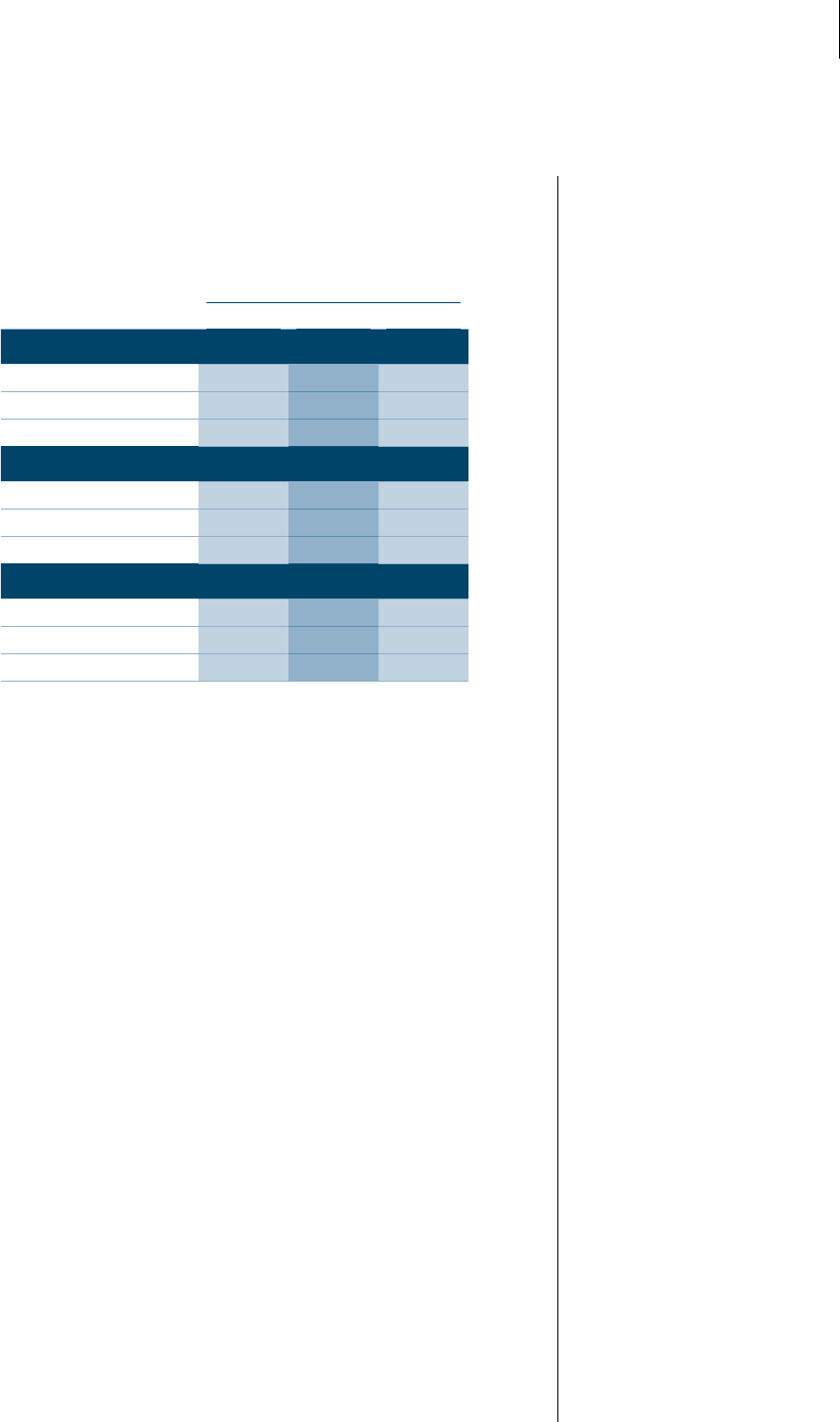
59California State Auditor Report 2016-114
February 2017
Table B.2
College Preparatory Coursework Completion by English Learner Status
COLLEGE PREPARATORY COURSEWORK
COMPLETIONBY GRADUATION YEAR
ENGLISH LEARNER STATUS
2013 2014 2015
Coachella Valley Unified School District
English learner 11% 12% 13%
Reclassified as fluent 43 51 48
Initially fluent/English native 22 28 30
SanFrancisco Unified School District
English learner 39% 41% 51%
Reclassified as fluent 74 77 78
Initially fluent/English native 60 63 71
Stockton Unified School District
English learner 4% 6% 9%
Reclassified as fluent 27 29 26
Initially fluent/English native 20 22 21
Source: California State Auditor’s analysis of student data provided by Coachella Valley, SanFrancisco,
and Stockton Unified SchoolDistricts.
Note: We excluded students who left thedistrict.

60 California State Auditor Report 2016-114
February 2017
Blank page inserted for reproduction purposes only.
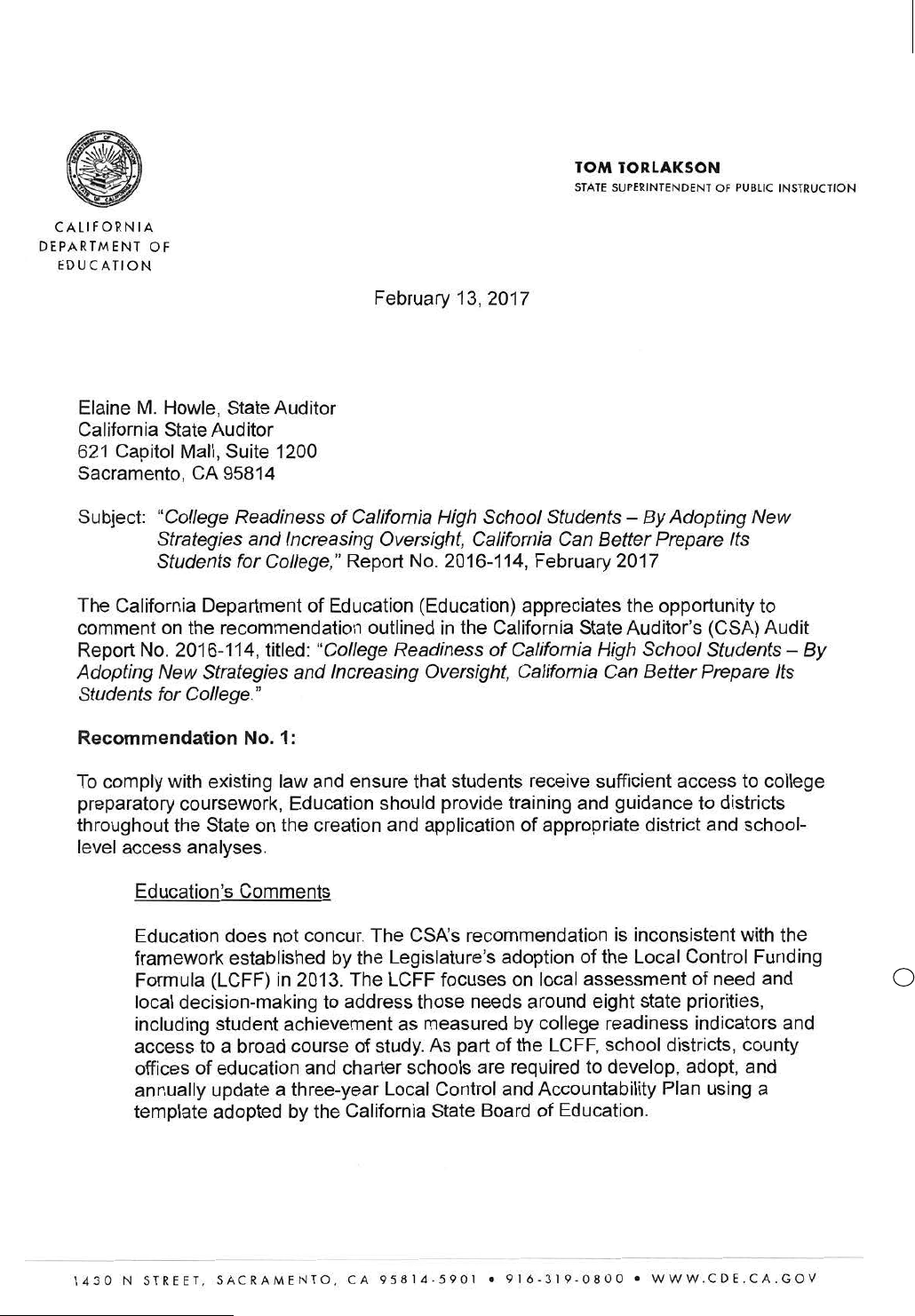
61California State Auditor Report 2016-114
February 2017
* California State Auditor’s comments begin on page65.
*
1

62 California State Auditor Report 2016-114
February 2017
2
3
4
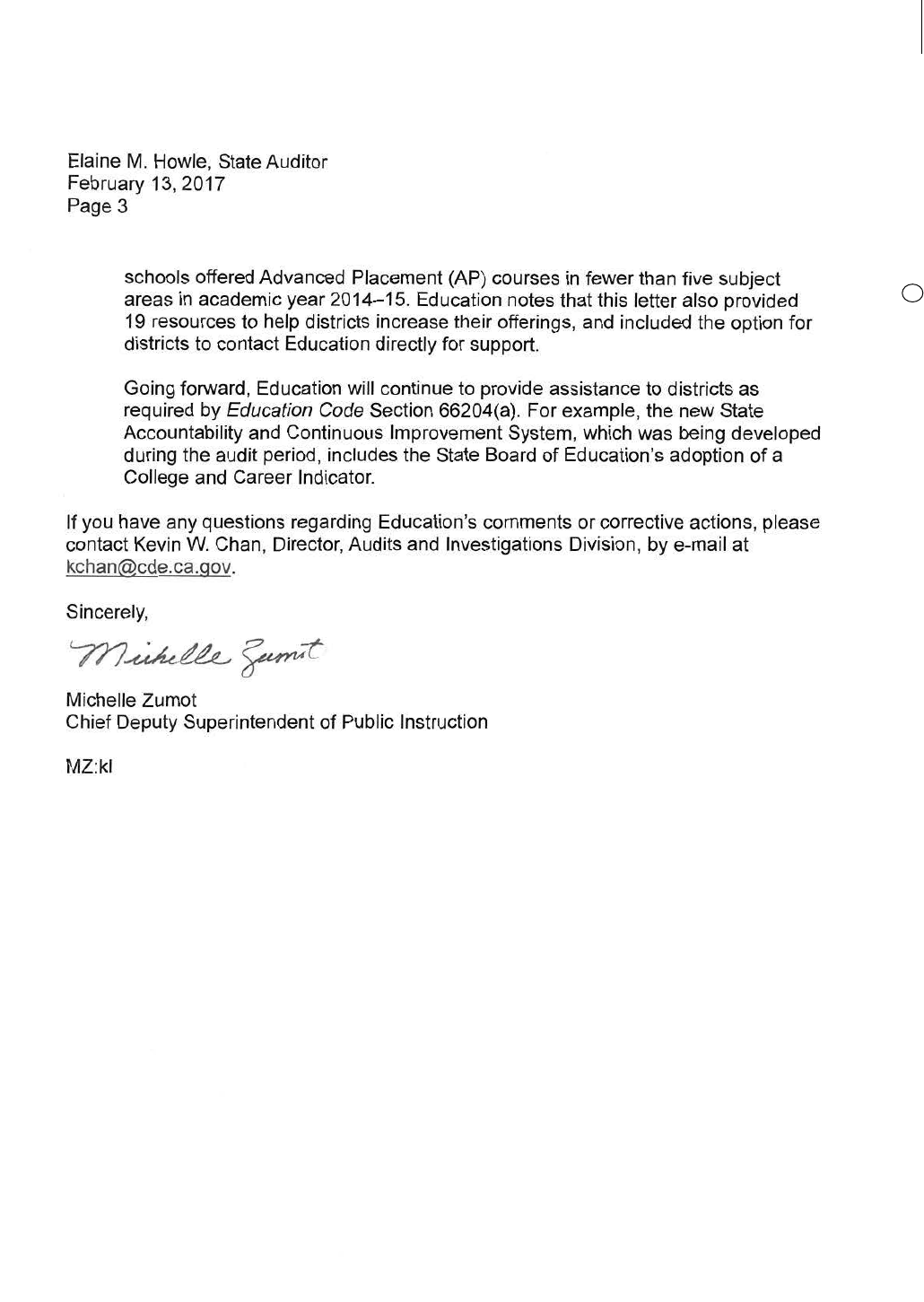
63California State Auditor Report 2016-114
February 2017
5

64 California State Auditor Report 2016-114
February 2017
Blank page inserted for reproduction purposes only.

65California State Auditor Report 2016-114
February 2017
Comments
CALIFORNIA STATE AUDITOR’S COMMENTS ON THE
RESPONSE FROM THE CALIFORNIA DEPARTMENT
OFEDUCATION
To provide clarity and perspective, we are commenting on the
response to our audit report from the California Department of
Education (Education). e numbers below correspond with the
numbers we have placed in the margin of Education’sresponse.
Education misunderstands our recommendation. As Education
acknowledges, the superintendent of public instruction has a
specified duty in assisting school districts in ensuring that all public
high school pupils have access to college preparatory coursework.
Moreover, as we describe on page, as part of the change to
school funding framework established by the local control funding
formula (funding formula), local educational agencies (LEAs) must
complete and update annually Local Control and Accountability
Plans (accountability plans). ese accountability plans must
include specific information regarding student achievement
as measured by the rate of college preparatory coursework
completion, among other metrics, as we state on the same page.
However, there is nothing in state law or regulation relating to the
funding formula that precludes Education from implementing
our recommendation. Indeed, rather than being “inconsistent
with the framework,” we think our recommendation furthers the
Legislature’s intent in supporting this statepriority.
Education has subjectively omitted the second portion of our
statement. Specifically, on page, we state that Education provides
minimal assistance to districts to ensure that students have access
to college preparatory coursework. None of the examples that
Education cites relate to ensuring that districts provide sufficient
college preparatory courseworkaccess.
On page we note that Education’s own administrator of
the college preparation and postsecondary programs office
acknowledged Education does not offer formal assistance to districts
related to access to college preparatory coursework; instead, it
directs the districts to contact the University of California. e
administrator further stated that Education could have a role
in assessing the sufficiency of the access that districts provide;
however, he explained Education currently has no guidelines and no
resources associated with this issue. us, even though Education
indicates that it has staff assigned to provide districts with ongoing
assistance, this assistance does not relate to college preparatory
courseworkaccess.
1
2
3

California State Auditor Report 2016-114
February 2017
66
We fail to see the merit of Education’s argument. e information
provided to LEAs related to the California Assessment of
Student Performance and Progress (CAASPP) does not relate
to assisting districts to ensure they provide sufficient access to
college preparatory coursework. According to Education’s website,
CAASPP identifies a student’s ability to perform college-level work
in English and mathematics. It is unclear how this examination
or the resulting achievement level given to each student in these
subject areas helps ensure that districts are providing access to
college preparatory coursework needed to enter the State’s public
universitysytems.
As we state on page, Education specified in its September,
letter that it provided these websites only as a convenience,
andthat their inclusion did not imply its endorsement. We maintain
thatoneletter, which Education sent after our audit began, about
advanced placement courses with an attached list of web addresses
does not constitute adequate assistance to districts to ensure they
provide sufficient access to college preparatory courses, especially
given that each of the three districts we reviewed lacked data and
processes to demonstrate they offered enough college preparatory
courses in each of the years wereviewed.
4
5

67California State Auditor Report 2016-114
February 2017
EMAILED RESPONSE FROM COACHELLA VALLEY UNIFIED SCHOOL DISTRICT*
CVUSD has taken stringent measures in the past 3years to address not only graduation, but
A‑G access to give rise to improving completion rates. Our graduation requirements, processes,
and coursework has seen significant changes to grant our students with access and opportunities
to establish A‑G status. CVUSD does not have an access issue but does continue to work on
academic achievement issues which are effecting students’ success in A‑G completion. e audit
focused primarily on past practices before the aforementioned changes came to practice. CVUSD
will continue to build personnel capacity and programs to help foster improvements in both
student achievement and system processes in support ofstudents.
ank you.
Jason B. Angle, Ed.D.
Assistant Superintendent
Educational Services Division
Coachella Valley Unified School District
(760)848‑1039
Jason.Angle@cvusd.us
1
* California State Auditor’s comment appears on page69.

68 California State Auditor Report 2016-114
February 2017
Blank page inserted for reproduction purposes only.

69California State Auditor Report 2016-114
February 2017
Comment
CALIFORNIA STATE AUDITOR’S COMMENT ON THE
RESPONSE FROM THE COACHELLA VALLEY UNIFIED
SCHOOLDISTRICT
To provide clarity and perspective, we are commenting on the
response to our audit report from Coachella Valley Unified School
District (Coachella). e number below corresponds with the
number we have placed in the margin of Coachella’sresponse.
Although the audit found various issues with Coachella’s past
practices, our recommendations will help ensure ongoing success
related to college preparatory coursework access andcompletion.
We look forward to reviewing the evidence of the improvements
that Coachella asserts it has made in itsresponse.
1

70 California State Auditor Report 2016-114
February 2017
Blank page inserted for reproduction purposes only.

71California State Auditor Report 2016-114
February 2017
STOCKTON UNIFIED SCHOOL DISTRICT
CURRICULUM • PROFESSIONAL DEVELOPMENT
1503 St. Mark’s Plaza, Suite B, Stockton, California 95207
Phone (209) 933-7030
February 15, 2017
TO:
FROM:
Ms. Elaine Howle
California State Auditor
Robert Sahli
Executive Director, Curriculum and Professional Development
SUBJECT: A-G Audit Response
Stockton Unified School District (SUSD) is continually working to improve services to students in all
areas including access to and successful completion of A-G courses. SUSD has course offerings at all of
its high schools that will provide a complete menu of courses necessary to qualify for UC/CSU
admission provided the students successfully pass their courses in timelines established or commit to
successful completion of credit recovery options.
SUSD’s graduation requirements, at the minimum level, do not meet the requirements of A-G in the
areas of Mathematics, World Language and Visual and Performing Arts. However, all students are
encouraged to pursue meeting A-G. Since many students fall short in the areas listed above, the SUSD
overall completion of A-G is negatively impacted. The graduation requirements do meet criteria for
admission to community colleges and the majority of SUSD graduates who continue in an academic
postsecondary pathway choose to attend the local college, Delta Community College. SUSD could
choose to have graduation requirements mirror A-G requirements, but this would negatively impact
graduation rates and those who do not choose to pursue a four year college pathway immediately after
high school.
Over the course of the past five years, since implementation of a new Student Information System
(Synergy), much work has been completed to correct errors in course codes, titles, and the related
flagging of courses for A-G. During this timeframe, UCOP has also modified its processes from
decentralized submission to centralized which will reduce errors. While there is a process in place at all
schools for counselors to assist students in building their high school course pathways, SUSD is
formulating a more formal process of documenting students’ progress through their battery of courses to
graduation. This process includes the creation of a new comprehensive counseling handbook and the use
of an on-track to graduate software application. SUSD recently received a college and career block
grant that will allow for hiring of a staff member to oversee district college and career efforts.
SUSD has undertaken several LCAP changes since the 2014-2015 LCAP plan year. In 2015, new staff
was assigned specifically to the LCAP. There are issues with the LCAP system established by the State
of California that SUSD must work under. Actions and services instituted through the LCAP cannot be
fully measured for effectiveness until the students receiving the services graduate. Information to
determine if an action or service is “effective” is dependent on last year’s data for this year’s activities
and the determination of effectiveness is therefore skewed. SUSD is proactive in assessing previous

72 California State Auditor Report 2016-114
February 2017
LCAPs to gain insight to better plan and implement services to ensure all students, including
unduplicated populations, are receiving services to be college and career ready.
SUSD will continue to remove obstacles and improve opportunities for students as they negotiate a
pathway to gradation and their choice of a college or career.
Cc: Eliseo Dávalos, Superintendent
Tom Anderson, Assistant Superintendent
